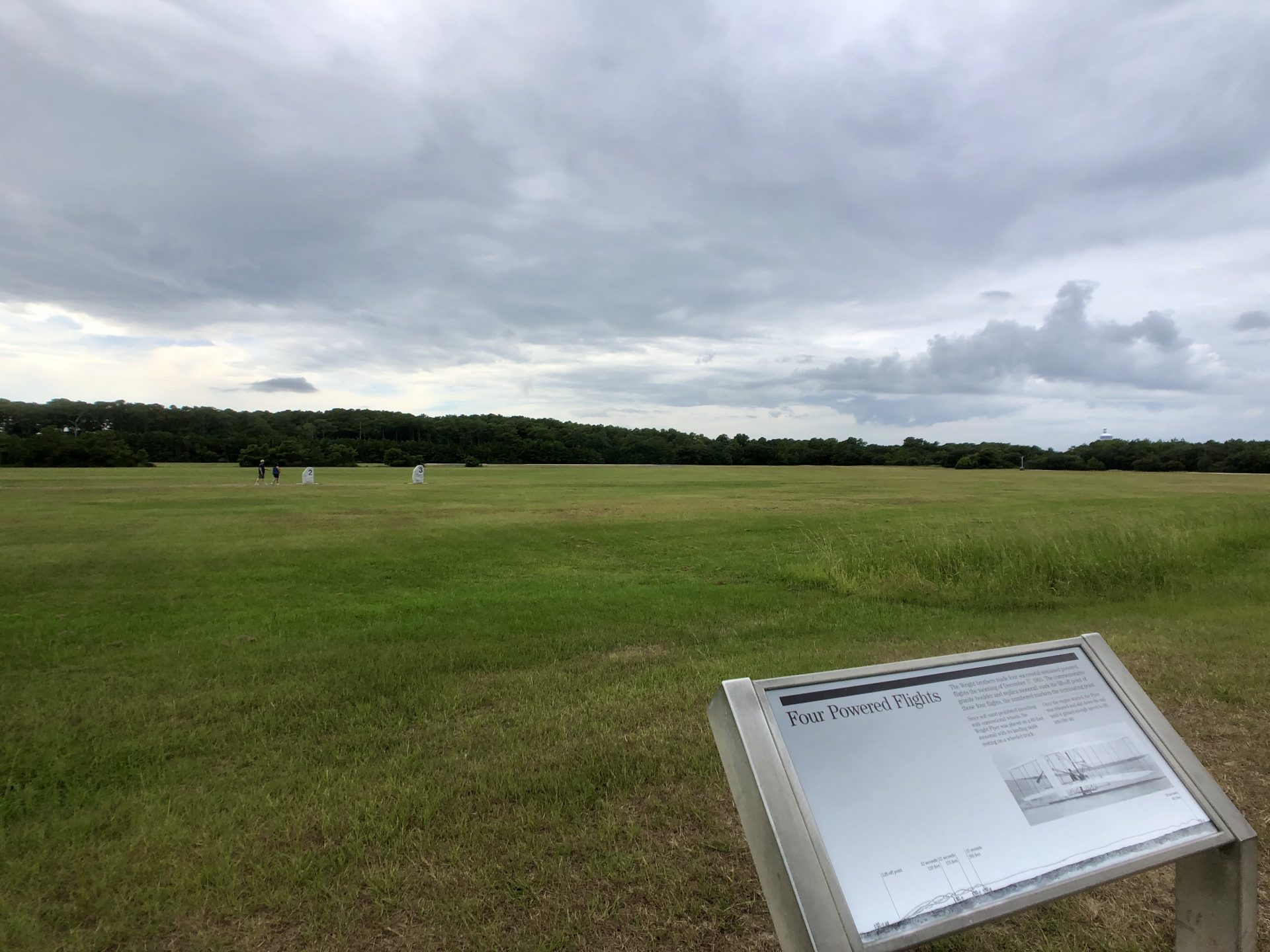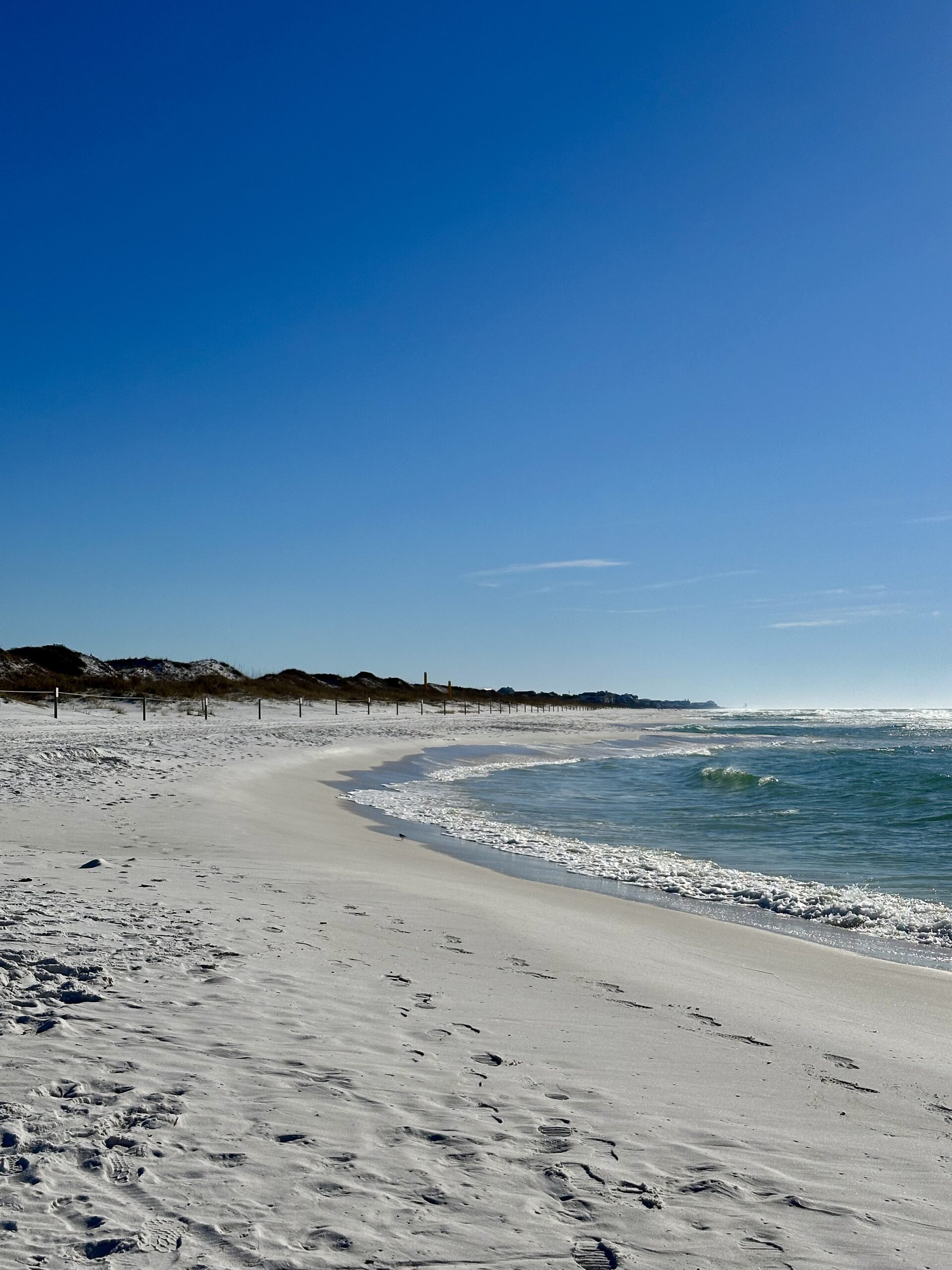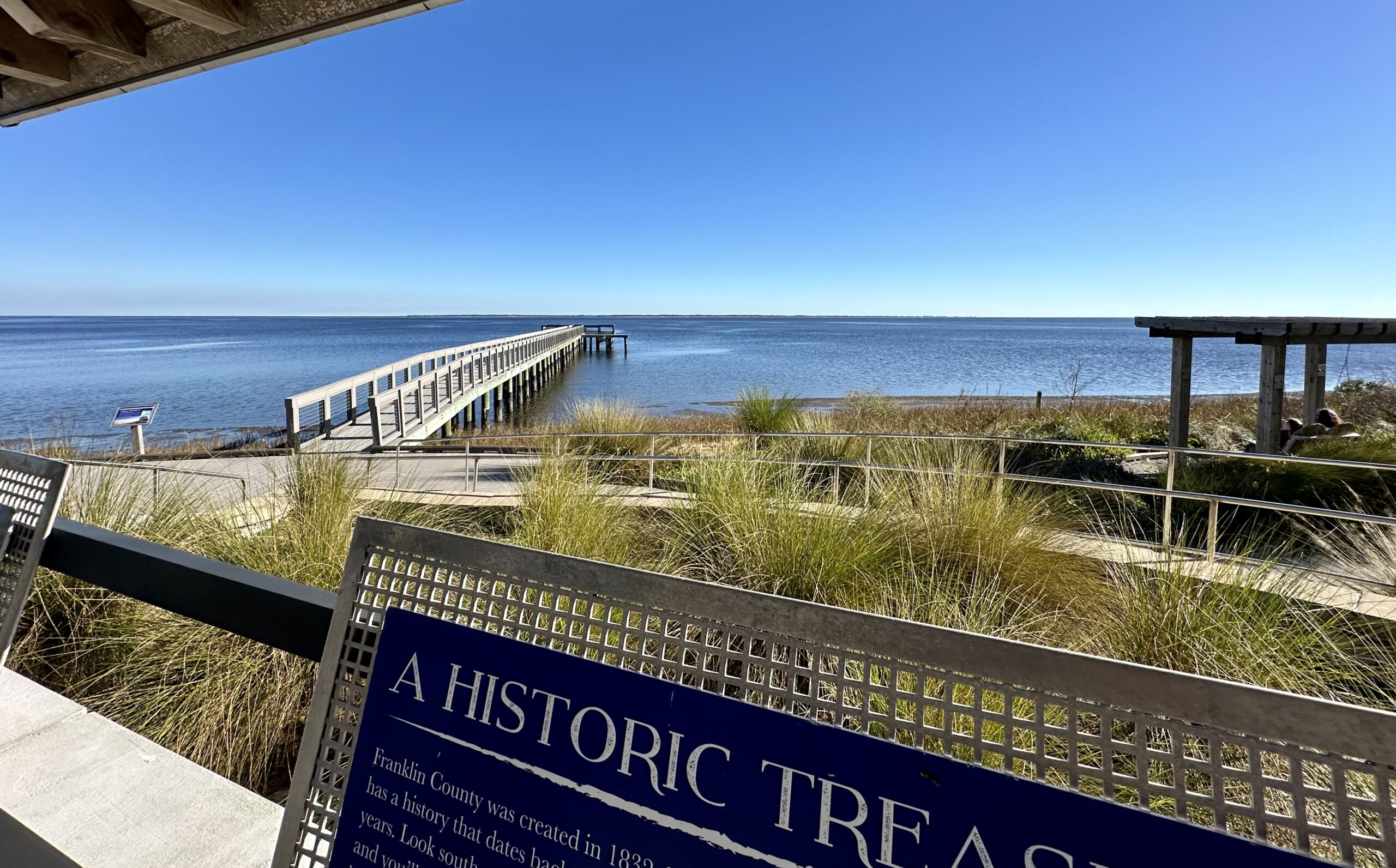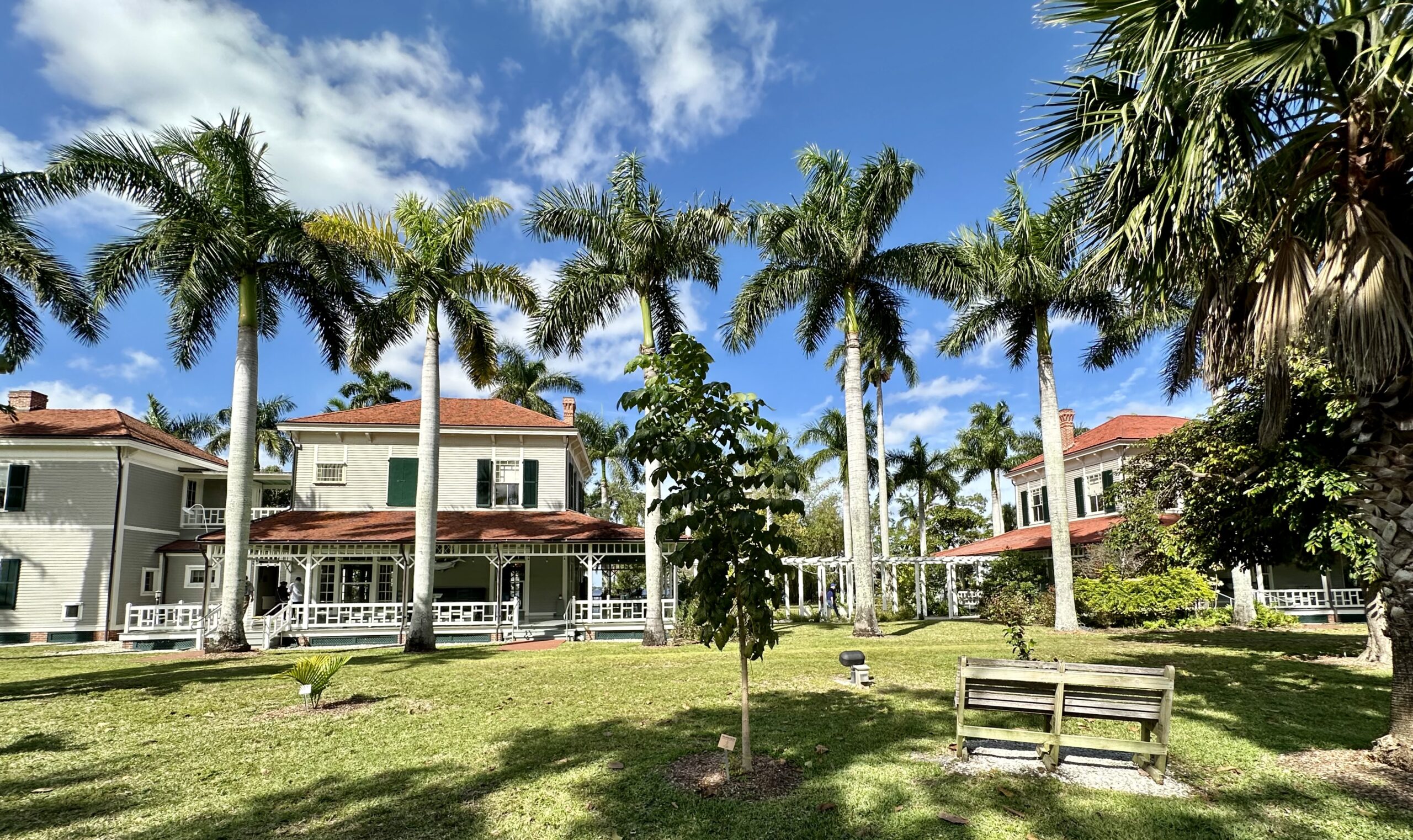“Wind, sand, and a dream of flight brought Wilbur and Orville Wright to Kitty Hawk, North Carolina where, after four years of scientific experimentation, they achieved the first successful airplane flights on December 17, 1903.” – NPS (National Park Service)
This National Park site is one we’ve wanted to see for a long time. We both enjoy flying because it allows us to see so much more of the world. And we were interested in learning the history of how it all began.
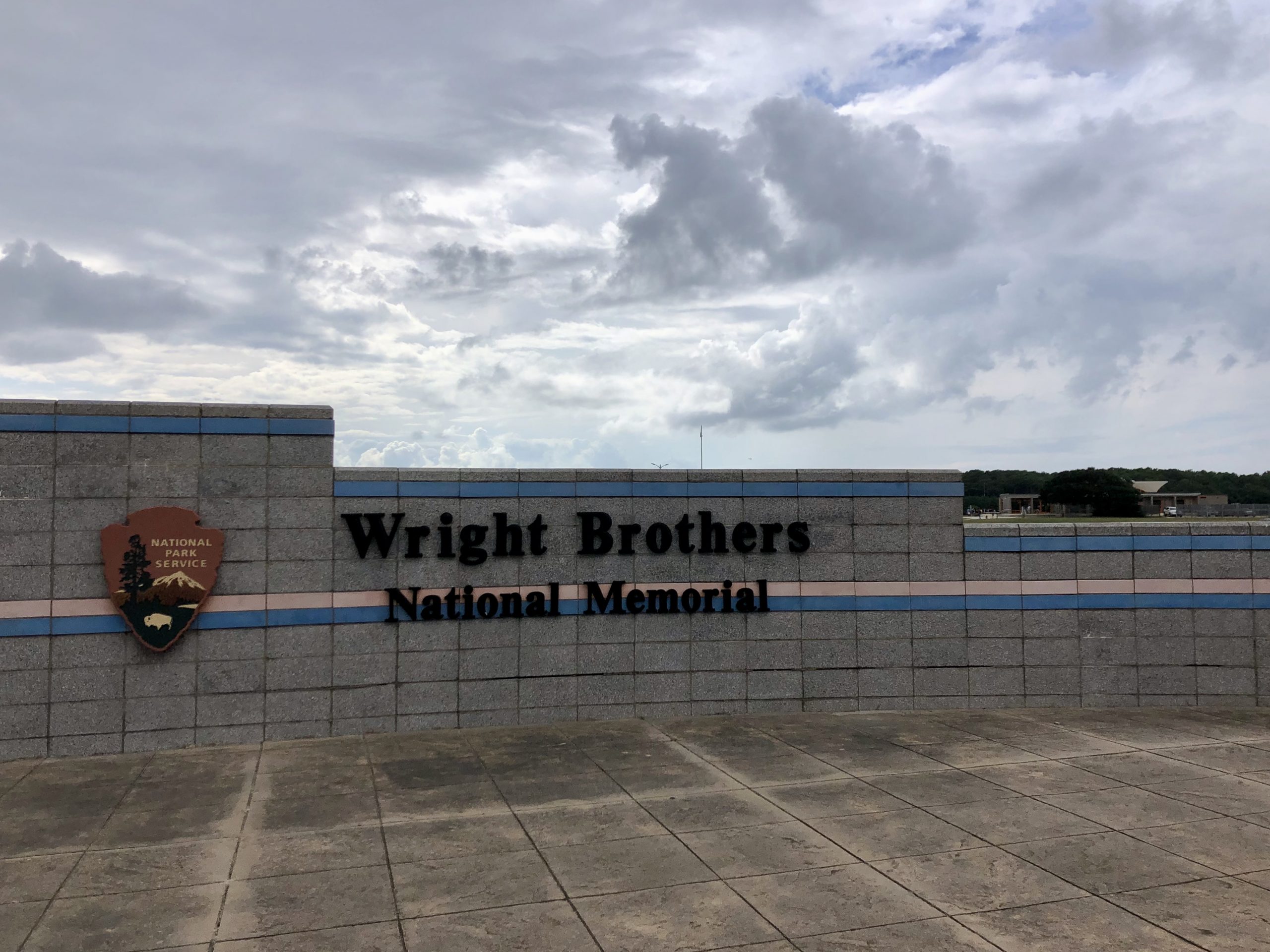
Just inside the visitor center is a large relief map of the whole site. This is not a large park and, as you will see from our pictures, we were able to walk around most of it in just a couple hours.
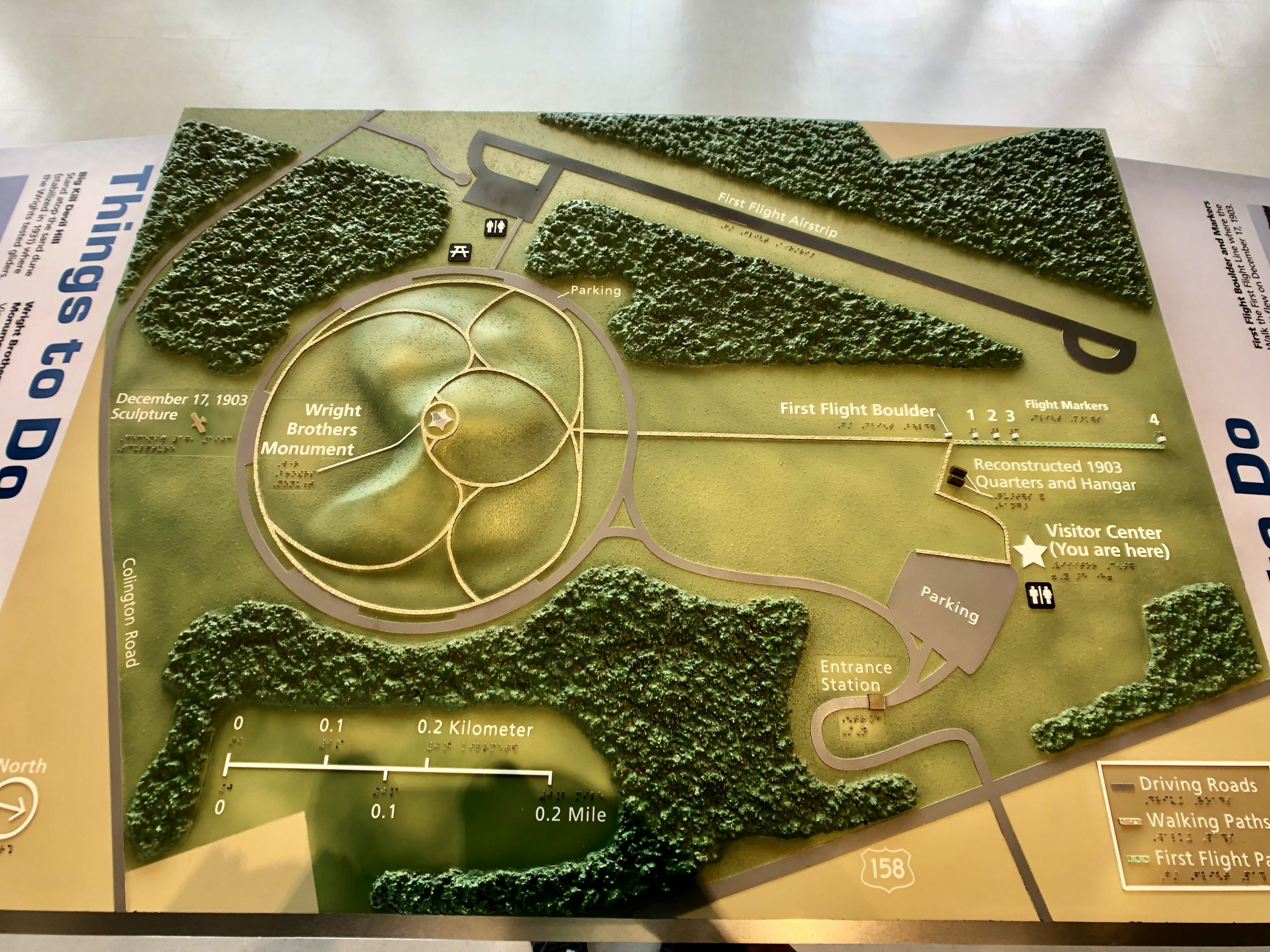
“Wilbur and Orville grow up in Dayton, Ohio, in a close-knit family. Parents Susan and Milton Wright foster their children’s curiosity and intellect…Susan Wright grows up in Indiana, and meets her future husband in college. Unlike her husband, she is mechanically minded. Susan encourages Wilbur and Orville to learn how things work, and they often go to her for mechanical advice.” – NPS
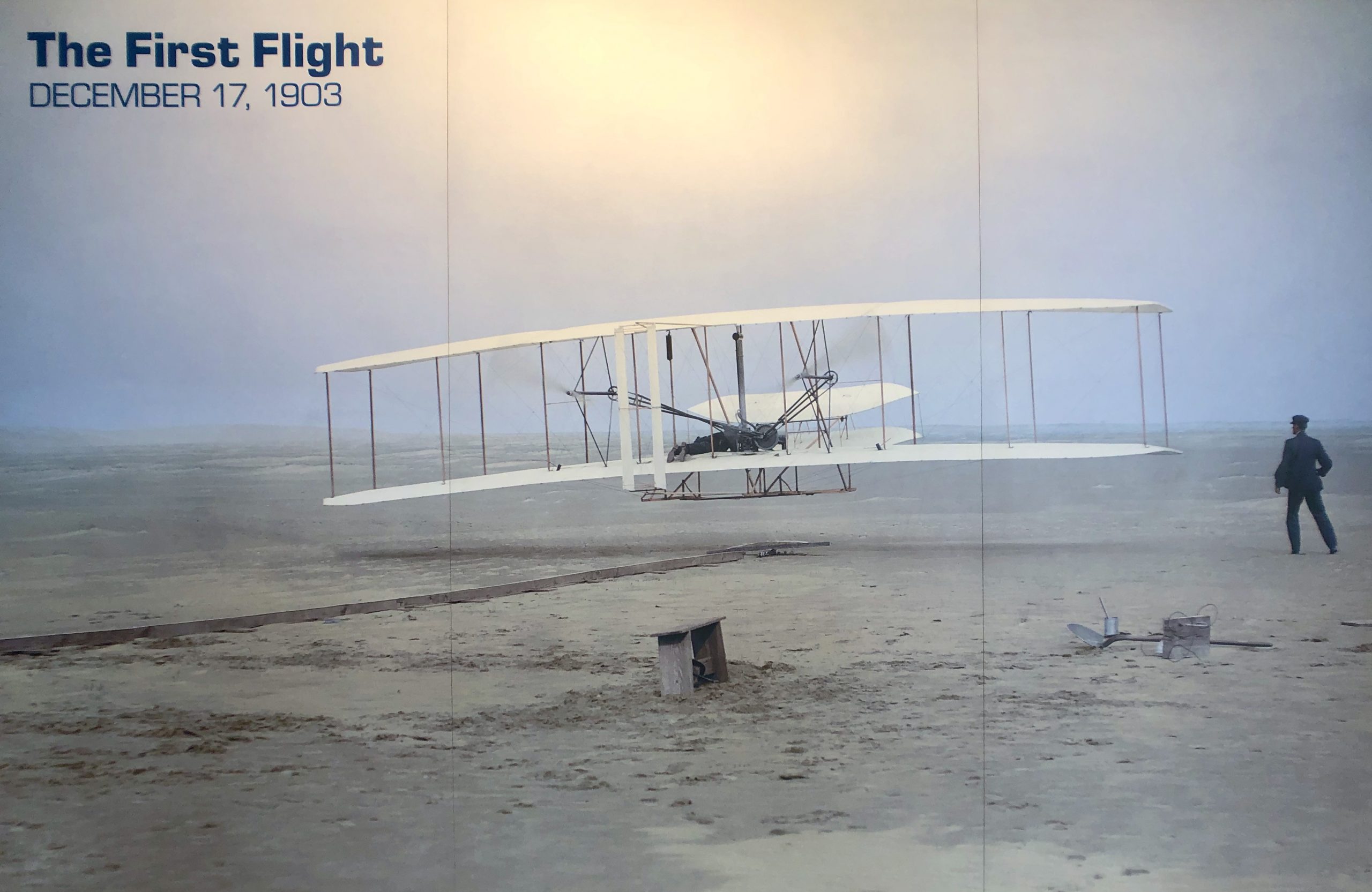
“Katharine was always a loyal sister who had great confidence in her brothers, and when we said we though we would fly, sh believed we would…”
Orville, 1923
“Wilbur Wright – 1867-1912: He’s smart, well-spoken, quick-witted, able to retain facts and put things in a logical order, an athlete (gymnastics and cycling), and a natural leader. He’s also shy, calm, quiet, and a little rumply.
Orville Wright – 1871-1948: Orville is a dreamer, an idealist, a restless thinker, and a sharp dresser. He’s mechanically minded – he can see why something doesn’t work, fix it, then make it better. He’s an avid reader, a good cook, and a keen cyclist. Shy in public, Orville’s a prankster and a chatterbox at home.” – NPS
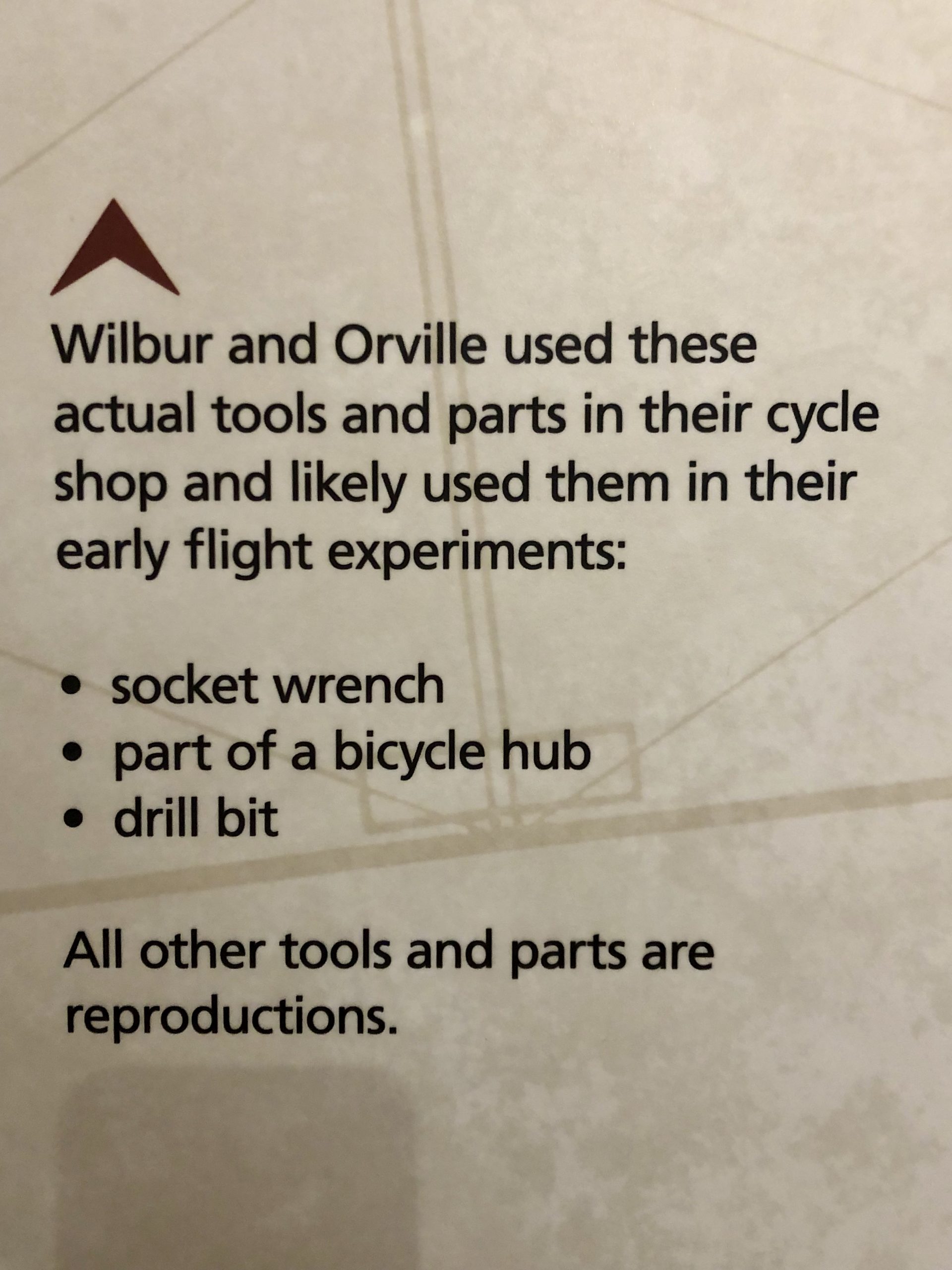
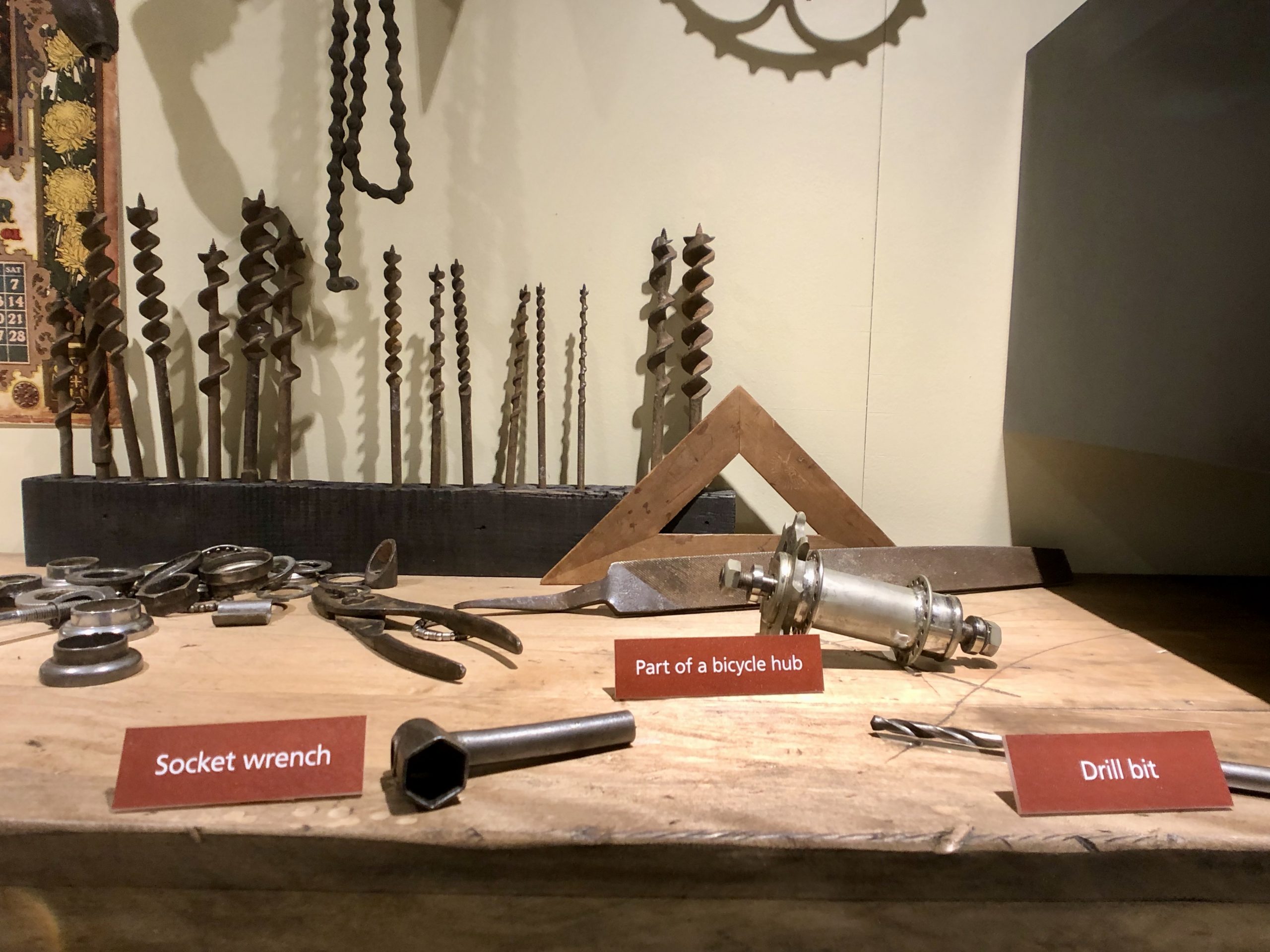
In the picture in the corner, “Bill and Addie Tate (in later years) pose with Addie’s sewing machine which she lends to Wilbur when he has to modify the 1900 Glider’s wing coverings. She uses his leftover French sateen fabric to make dresses for her daughters.” – NPS
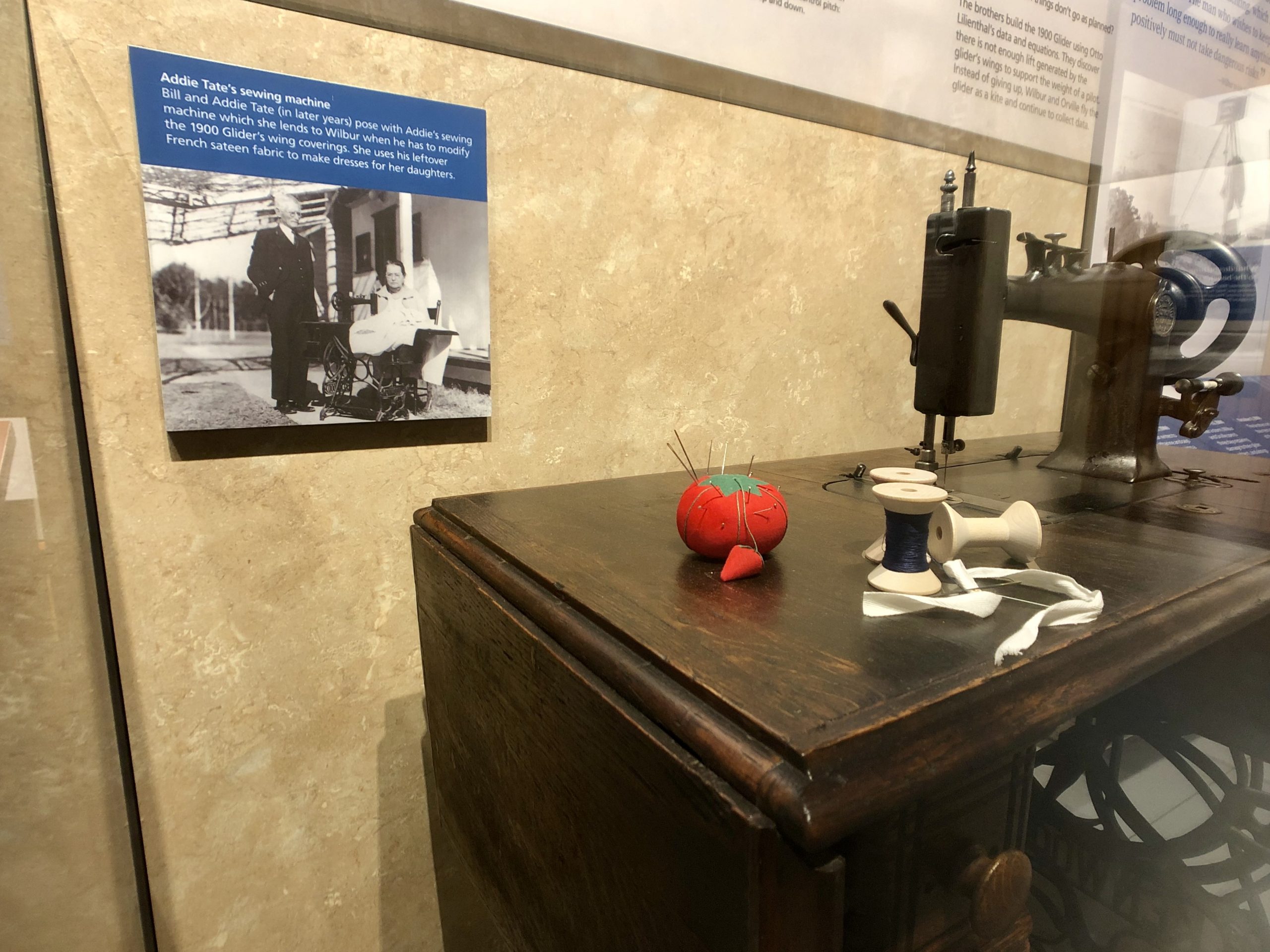
“The brothers began their experimentation in flight in 1896 at their bicycle shop in Dayton, Ohio. They selected the beach at Kitty Hawk as their proving ground because of the constant wind that added lift to their craft.” – EyewitnesstoHistory.com
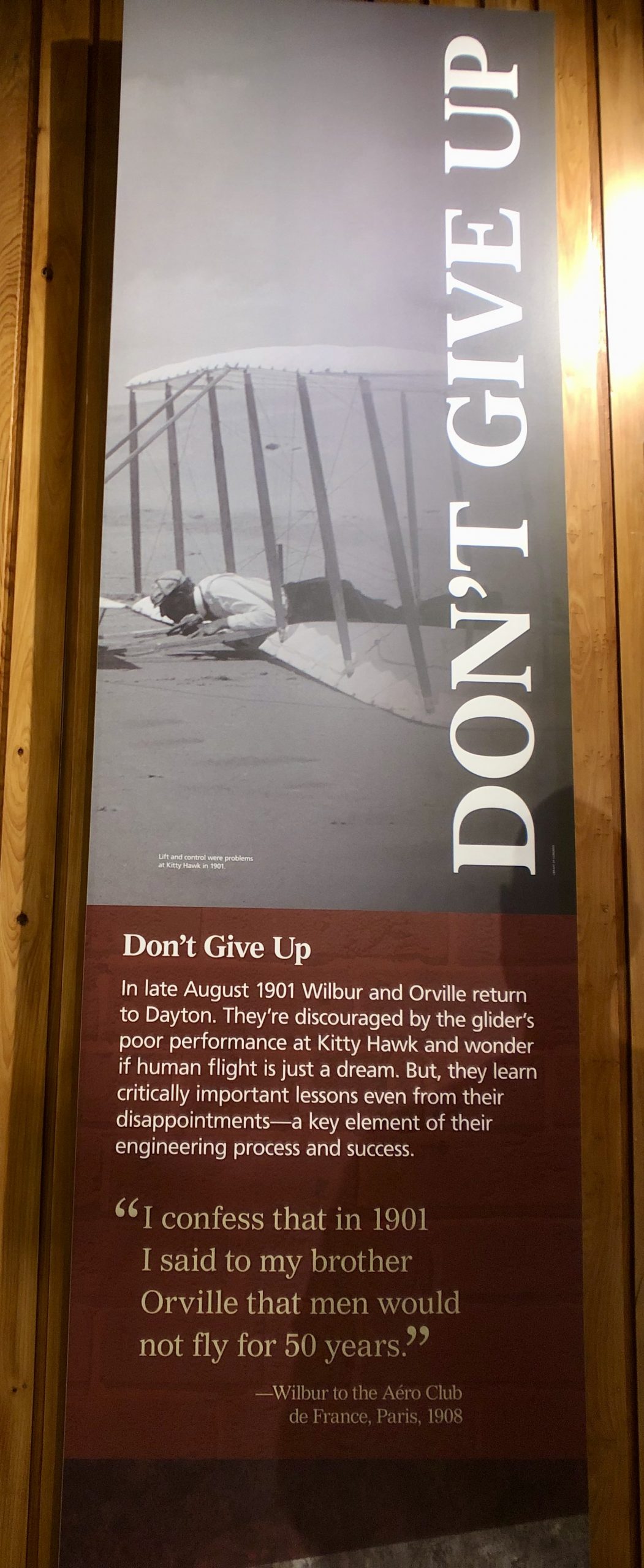
“In 1902 they came to the beach with their glider and made more than 700 successful flights. Having perfected glided flight, the next step was to move to powered flight. No automobile manufacturer could supply an engine both light enough and powerful enough for their needs. So they designed and built their own.” – EyewitnesstoHistory.com
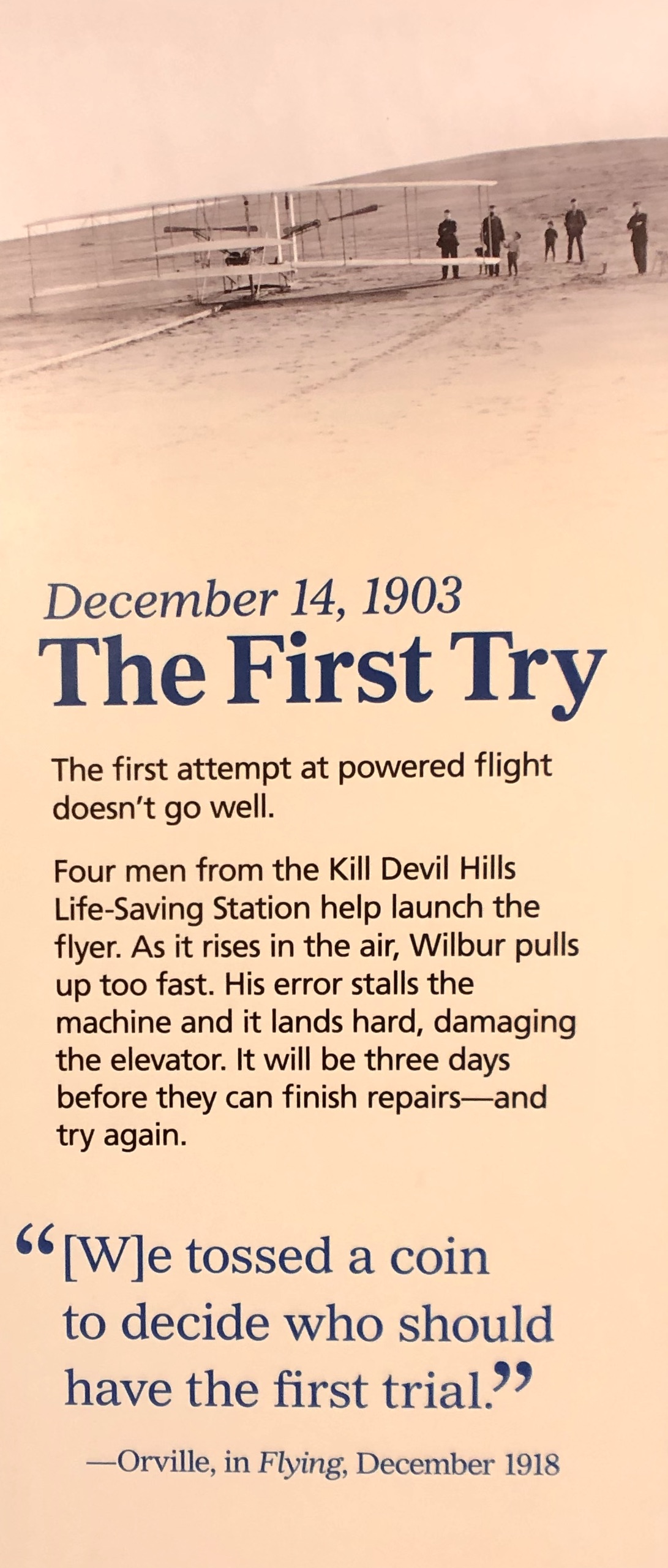
A full scale model sits in the visitor center. The original is on display at the National Air and Space Museum in Washington, DC.
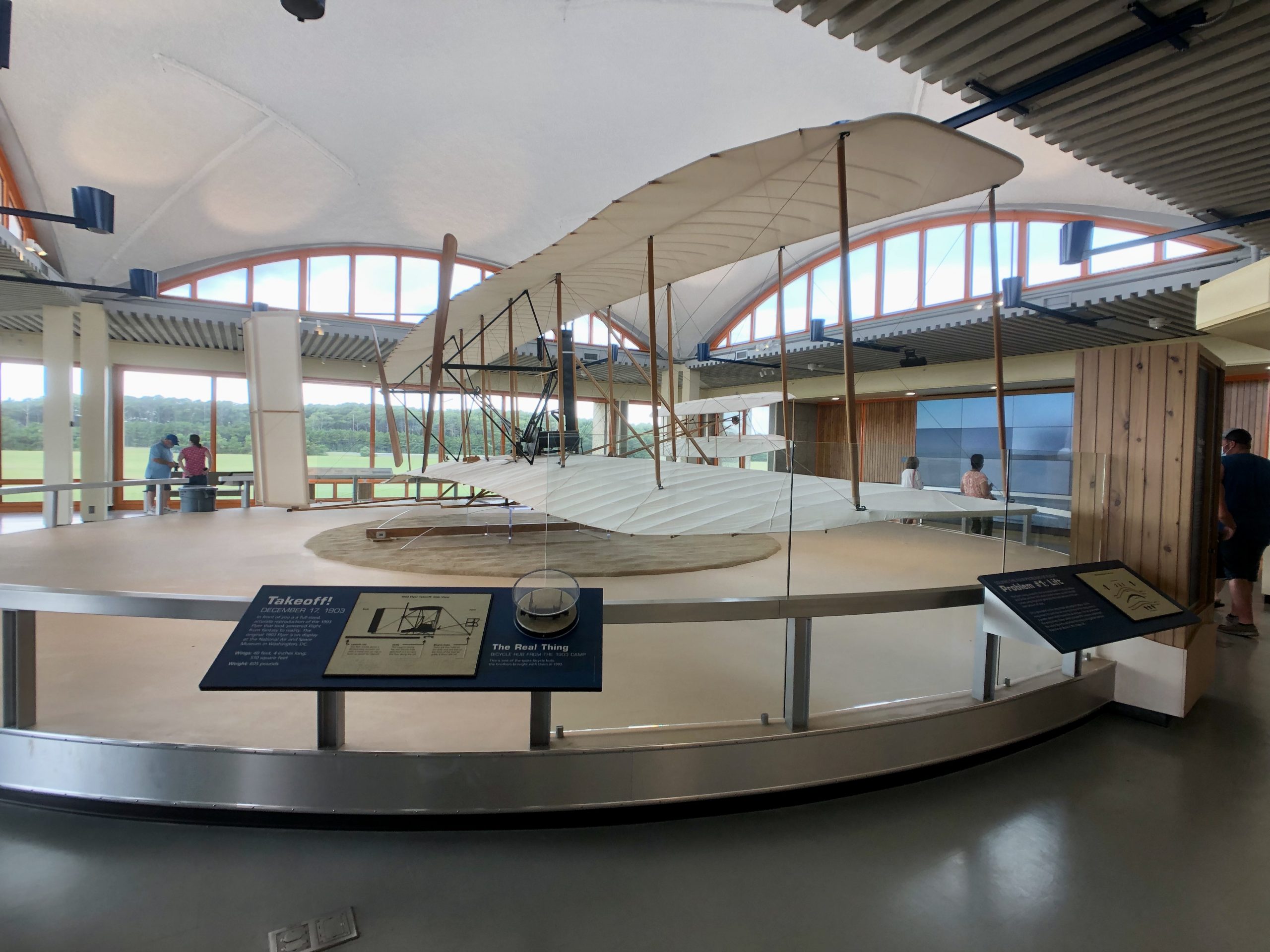
Three days later…
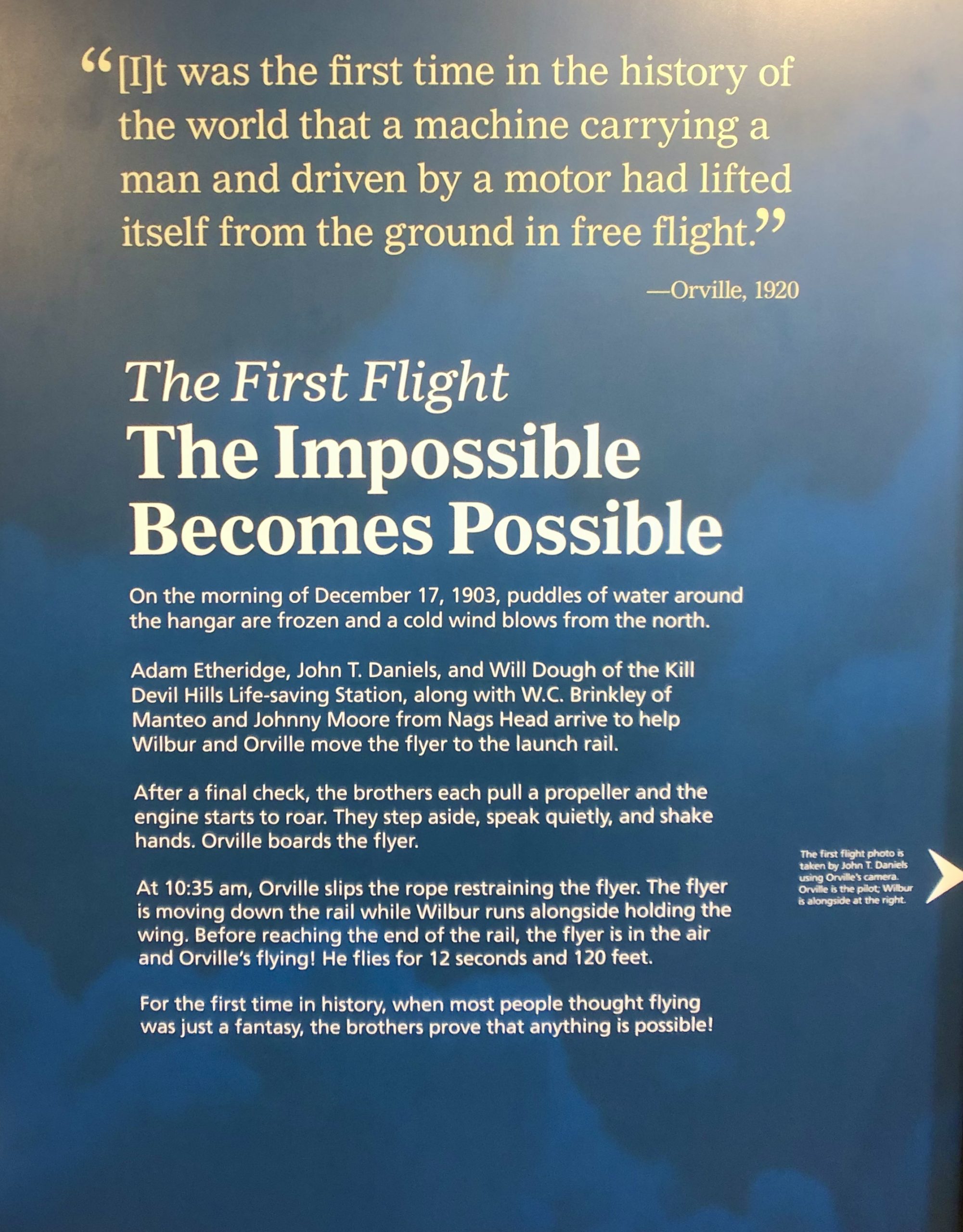
Below – “The first flight photo is taken by John T. Daniels using Orville’s camera. Orville is the pilot, Wilbur is alongside at the right.” – NPS
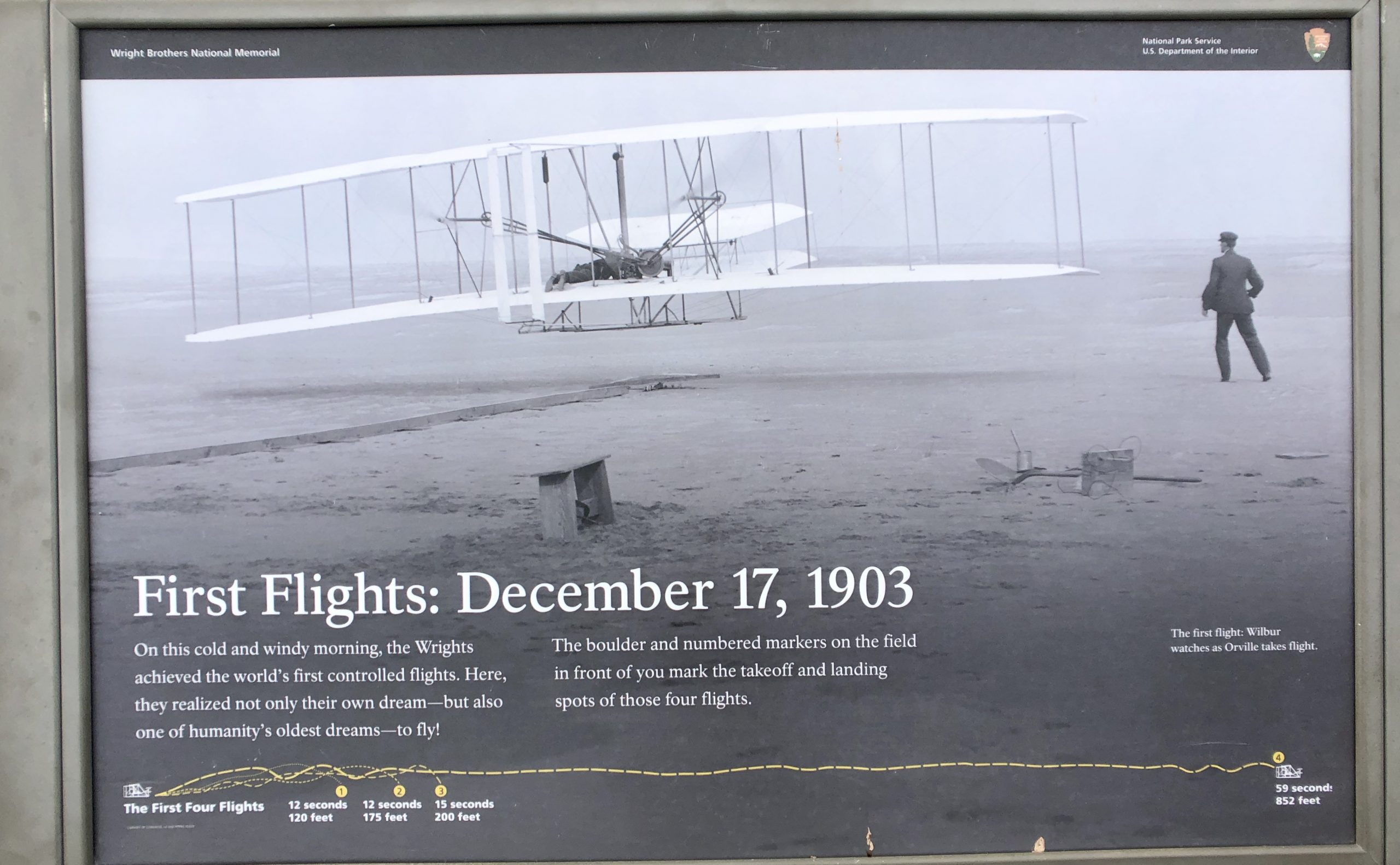
“Orville sends a telegram to his father. Because of an error in transmission, it incorrectly states the longest flight as 57 seconds (instead of 59) and misspells Orville’s name.” – NPS
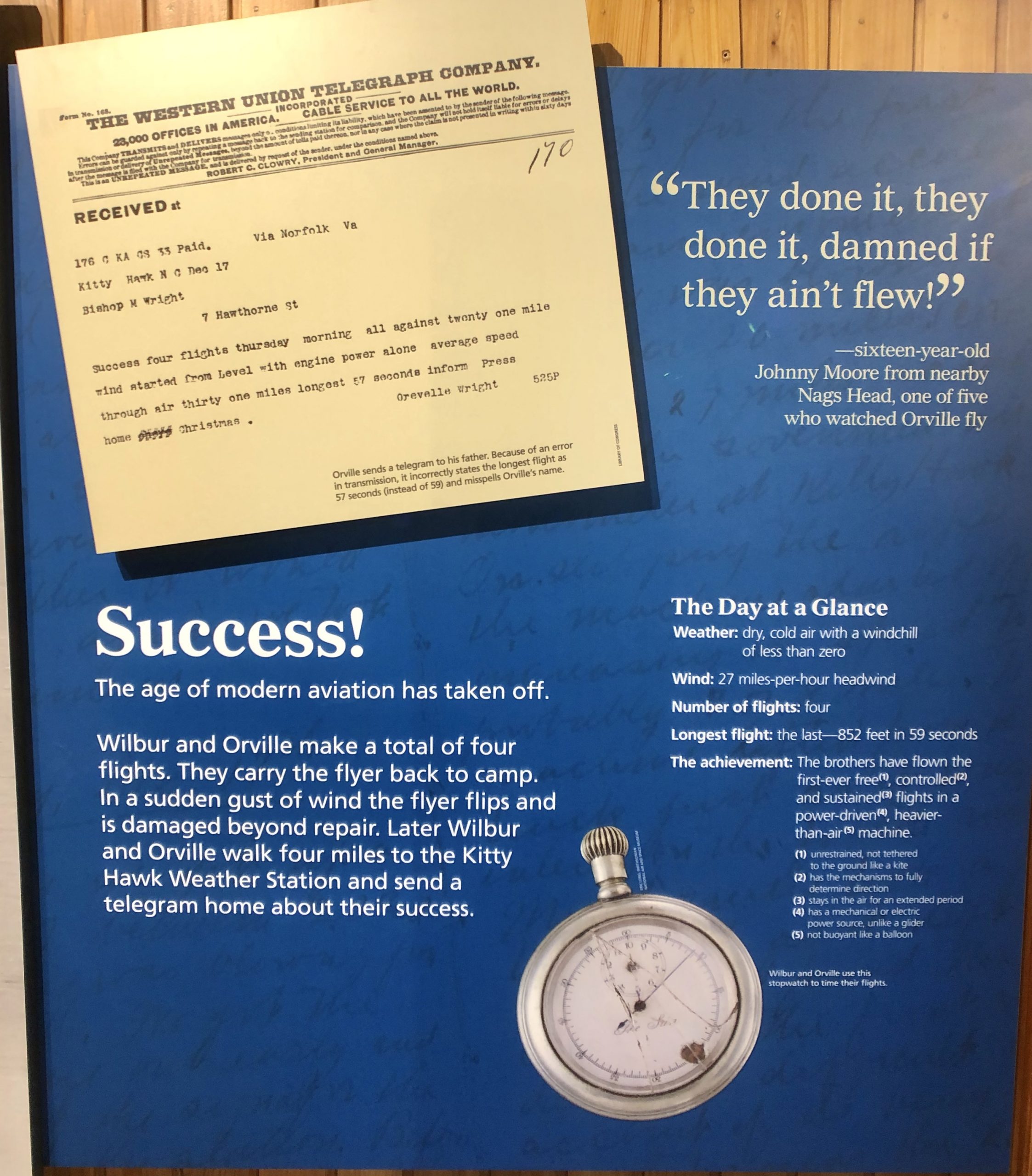
“It was no accident that North Carolina’s remote Outer Banks provided the setting for this historic occasion. Careful research had brought the Wright brothers to the Kitty Hawk area in September 1900 to test their first full-size glider. The conditions seemed ideal for flight experiments: strong winds, tall sand dunes for launching, wide expanses of sandy beaches for soft landings, and isolation for privacy.” – NPS
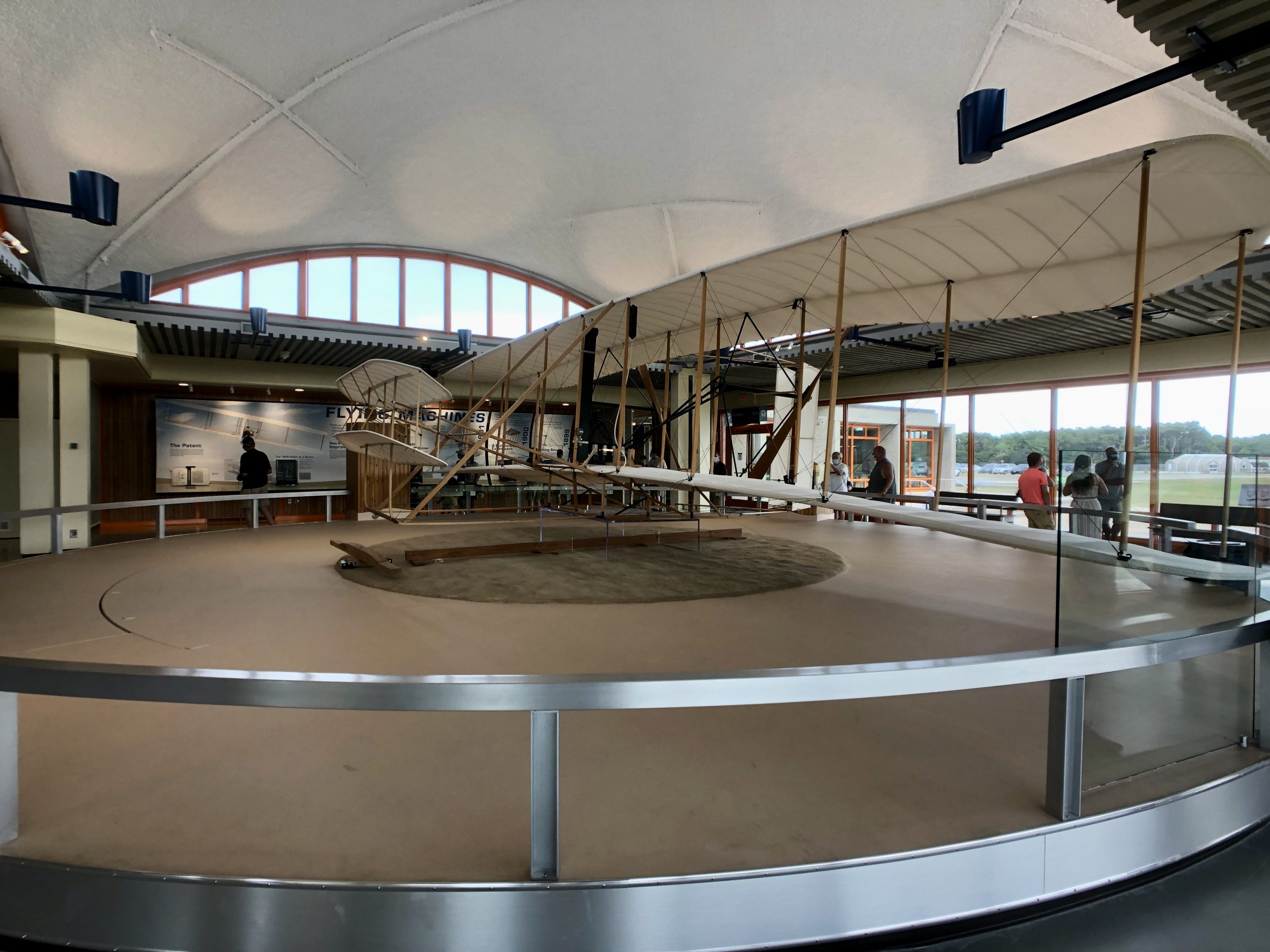
Today this field is covered in grass. A park ranger told us this is because the wind constantly blew sand and covered up the original flight tracks.
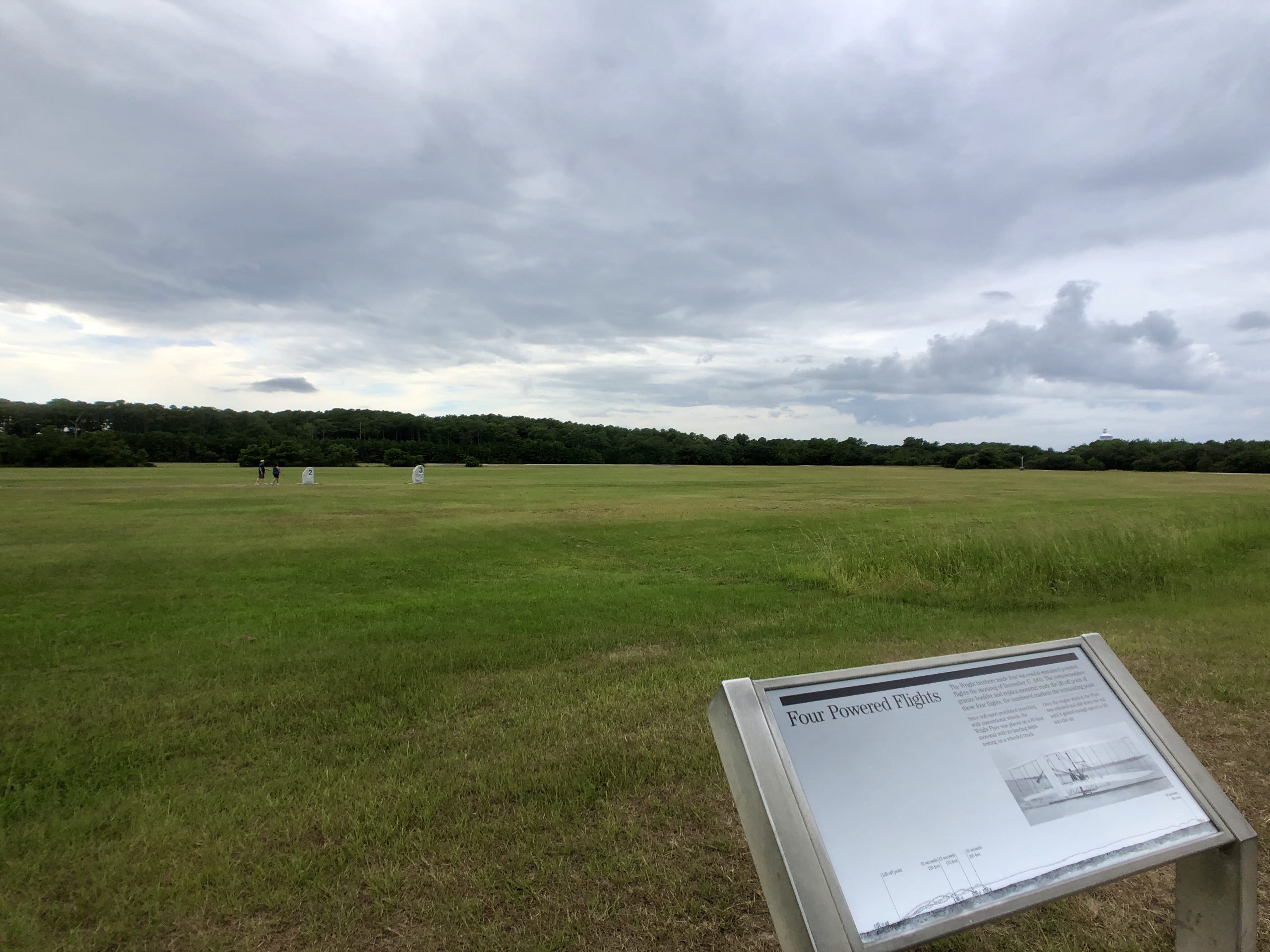
“When the Wright brothers arrived here in September 1900, the Outer Banks were very different from today. There were no bridges connecting the Outer Banks to the mainland and Kitty Hawk was a remote, self-sustaining fishing village with few residents and even fewer structures…they lived in rudimentary tents that often blew over in the nearly constant winds. In addition, they were plagued by mosquitos and a lack of supplies. Nonetheless, creature comforts were outweighed by their desire to perfect flight.
In 1901, the brothers improved their camp conditions. They constructed a more permanent wood-frame workshop and storage facility. In 1902, with the help of local residents, they upgraded their camp buildings further by adding more space to the workshop for use as living quarters. When they returned to the Outer Banks yet again in 1903, they repaired the storage facility/workshop, which had been blown off its foundation by storms, and they also constructed a hangar to assemble their powered aircraft.” – NPS
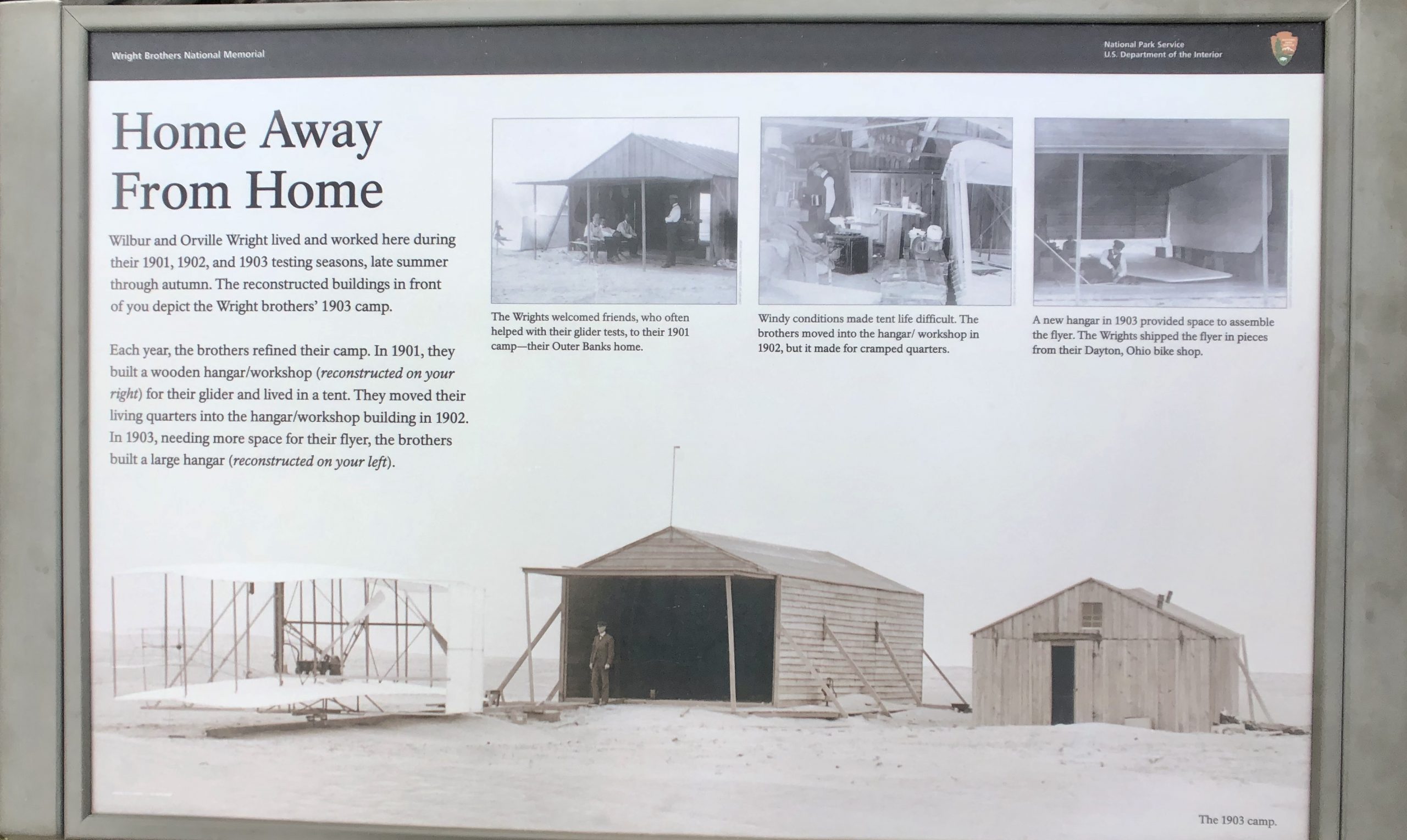
“The camp buildings were first reconstructed in 1953 in commmoration of the 50th anniversary of the first flight. Due to storm and termite damage, these structures were removed in 1963 and rebuilt between 1963 and 1965.
In 1976, the hangar was replaced due to deteriorating conditions and the living quarters received much needed repairs the same year.
In 1984, the hangar was rebuilt for a third time, to more exact specifications, after being damaged by a storm.
In 1993, the parks preservation team rebuilt both the living quarters and the hangar building. Although they subsequently require occasional replacement materials and repairs, these are the current structures that stand today.” – NPS
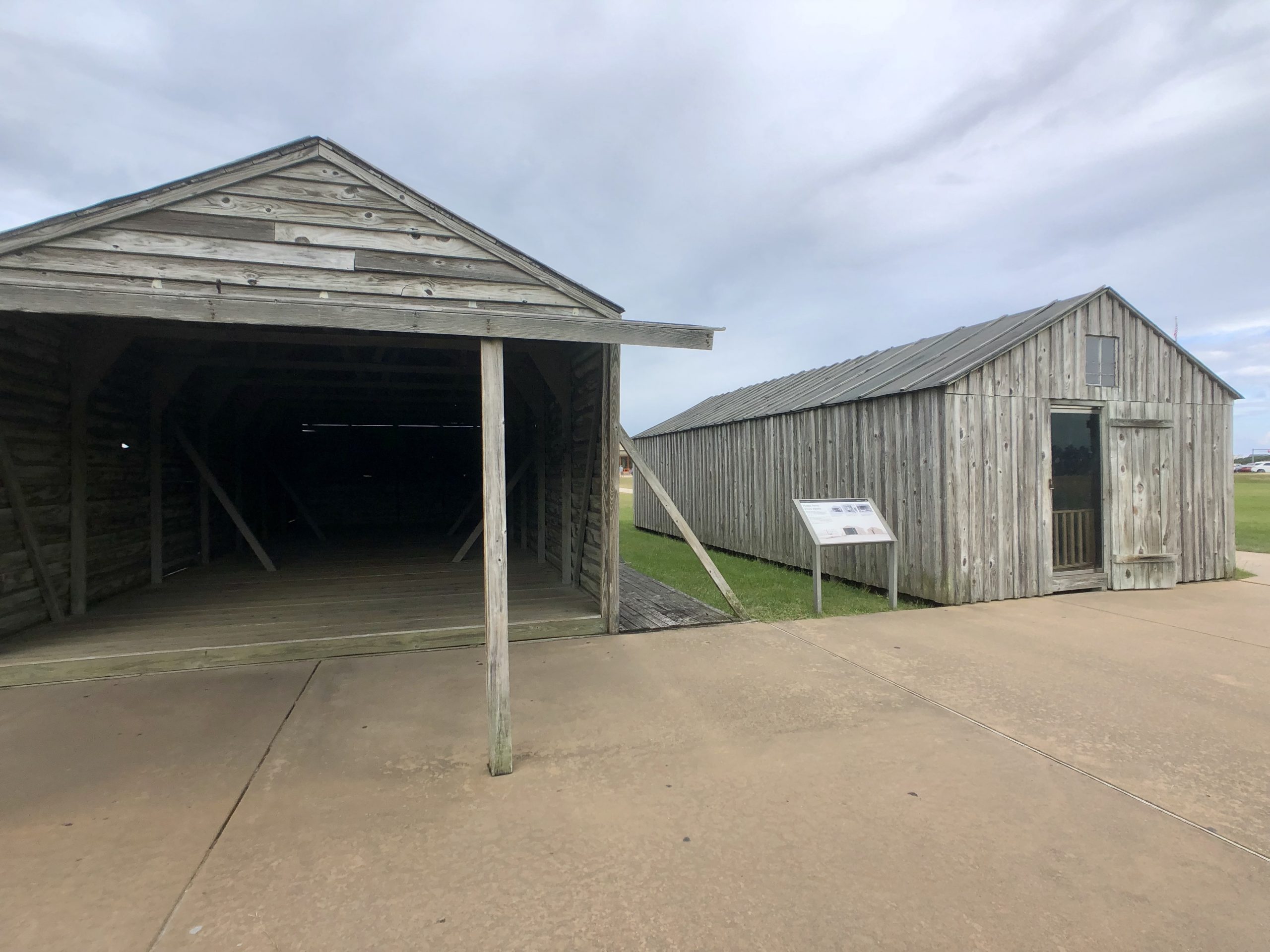
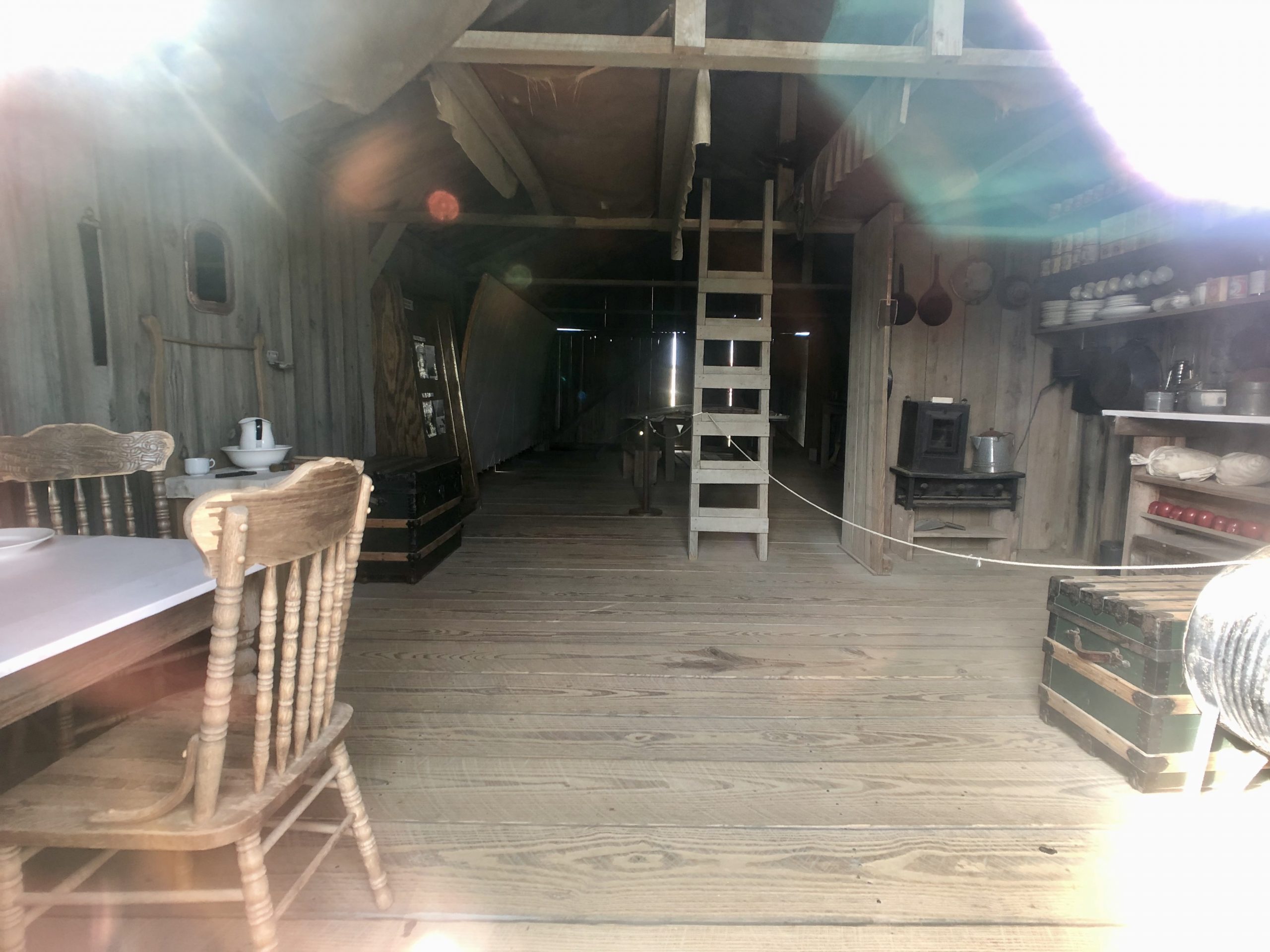
“…on December 17, 1928…200 delegates from the International Civil Aeronautics Conference and more than 3,000 visitors dedicated a granite marker placed at the approximate location of the 1903 liftoff and laid the cornerstone of the monument to be placed on Kill Devil Hill.” – NPS
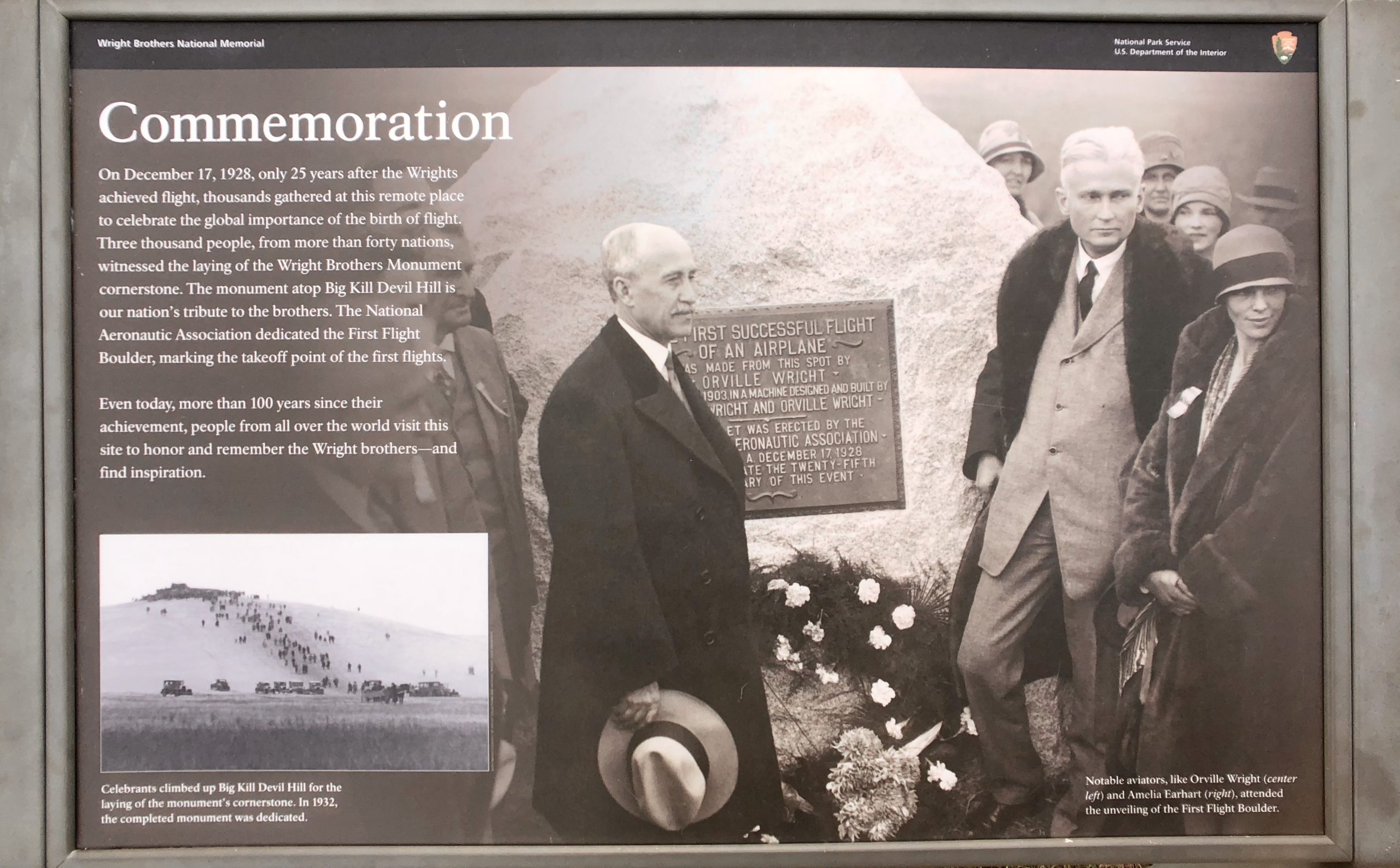
The boulder sits on roughly the spot where Orville and Wilbur first took flight. There are additional boulders placed at the locations where they landed each of their first four flights.
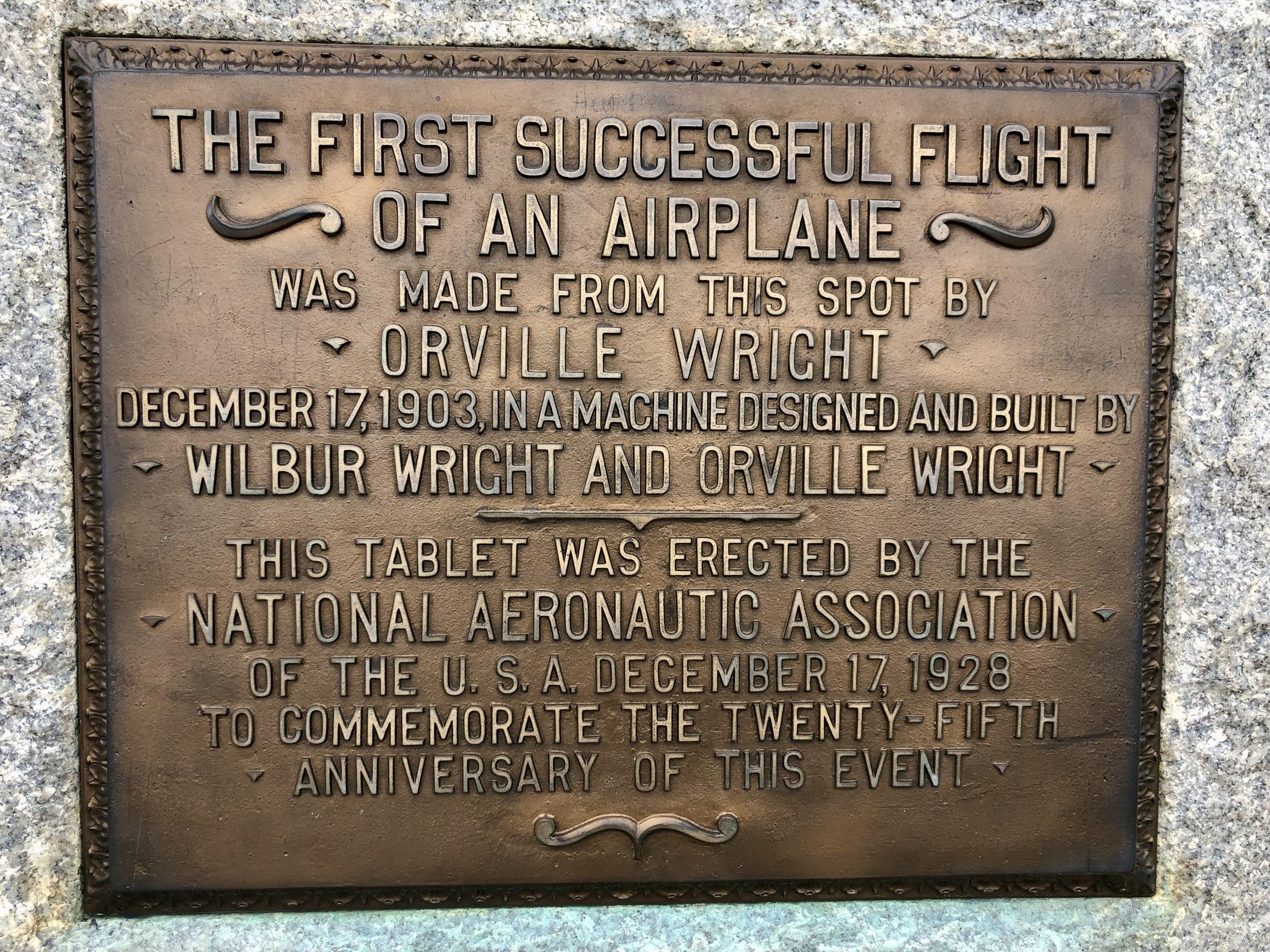
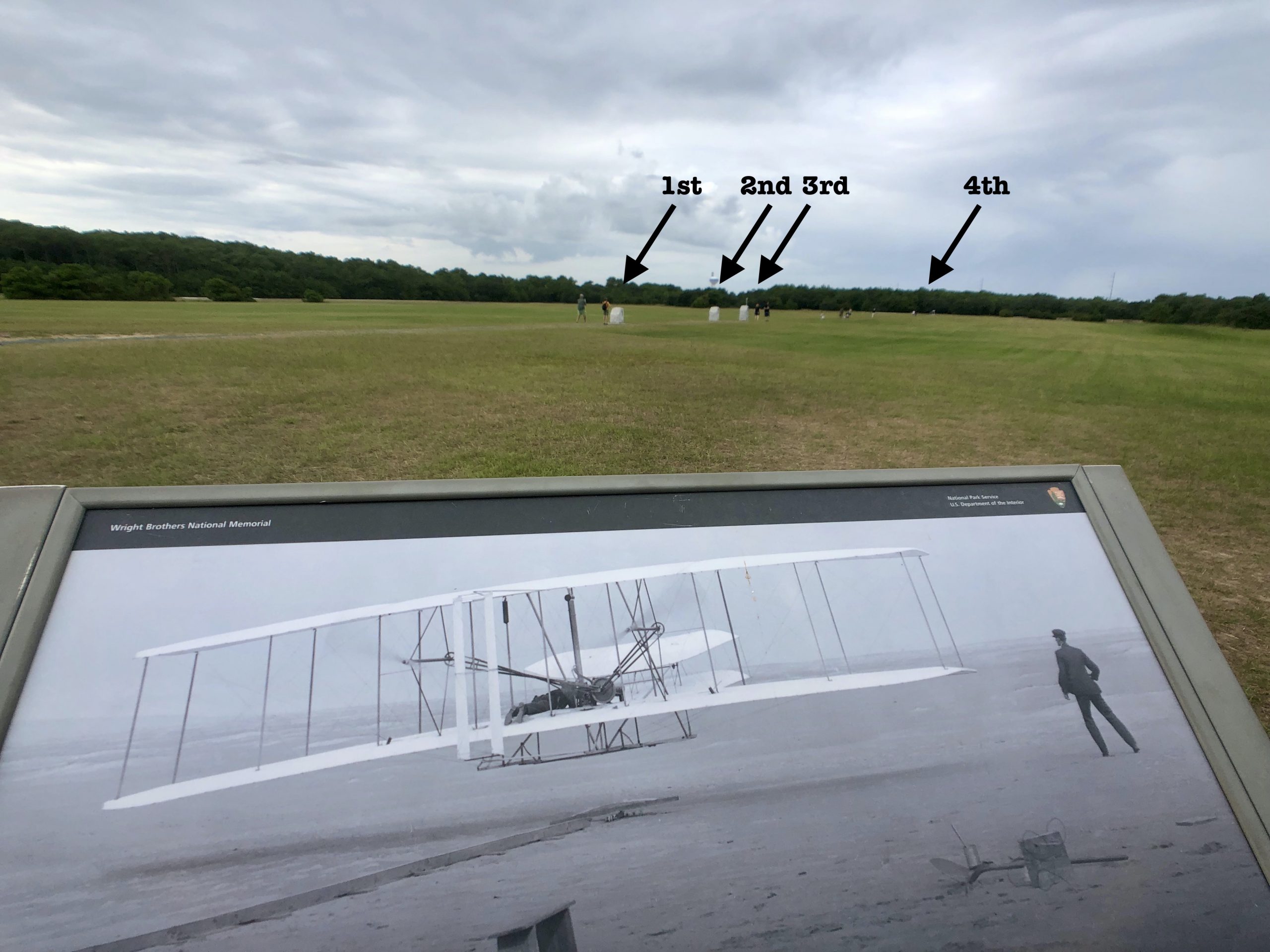
“The soft sand was not a good “runway.” The brothers built a 60-foot wooden rail with metal stripping to provide a hard and smooth surface for takeoff. A dolly of wood and bicycle hubs was placed on the rail to hold the flyer above the sand as it accelerated forward to liftoff.” – NPS
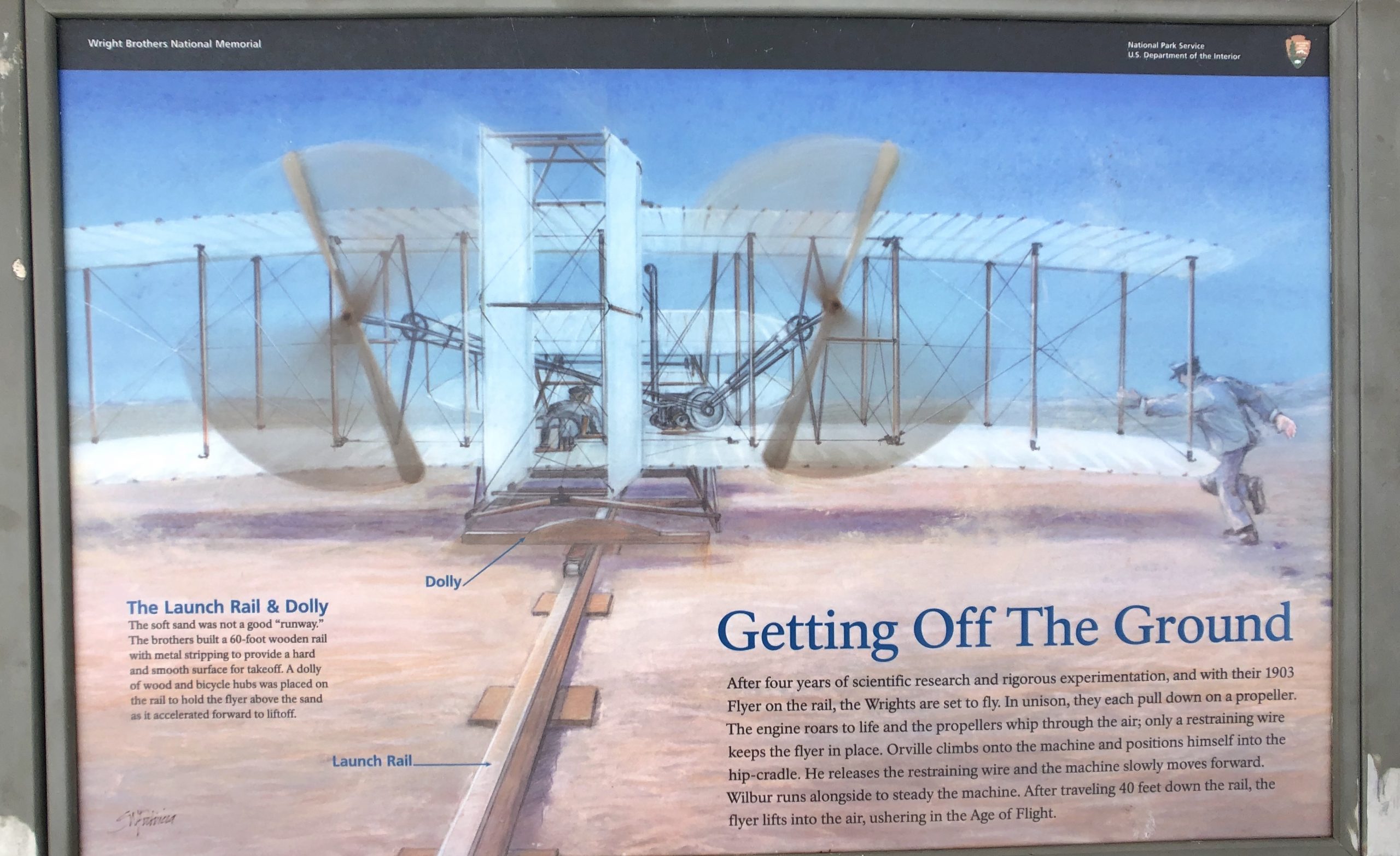
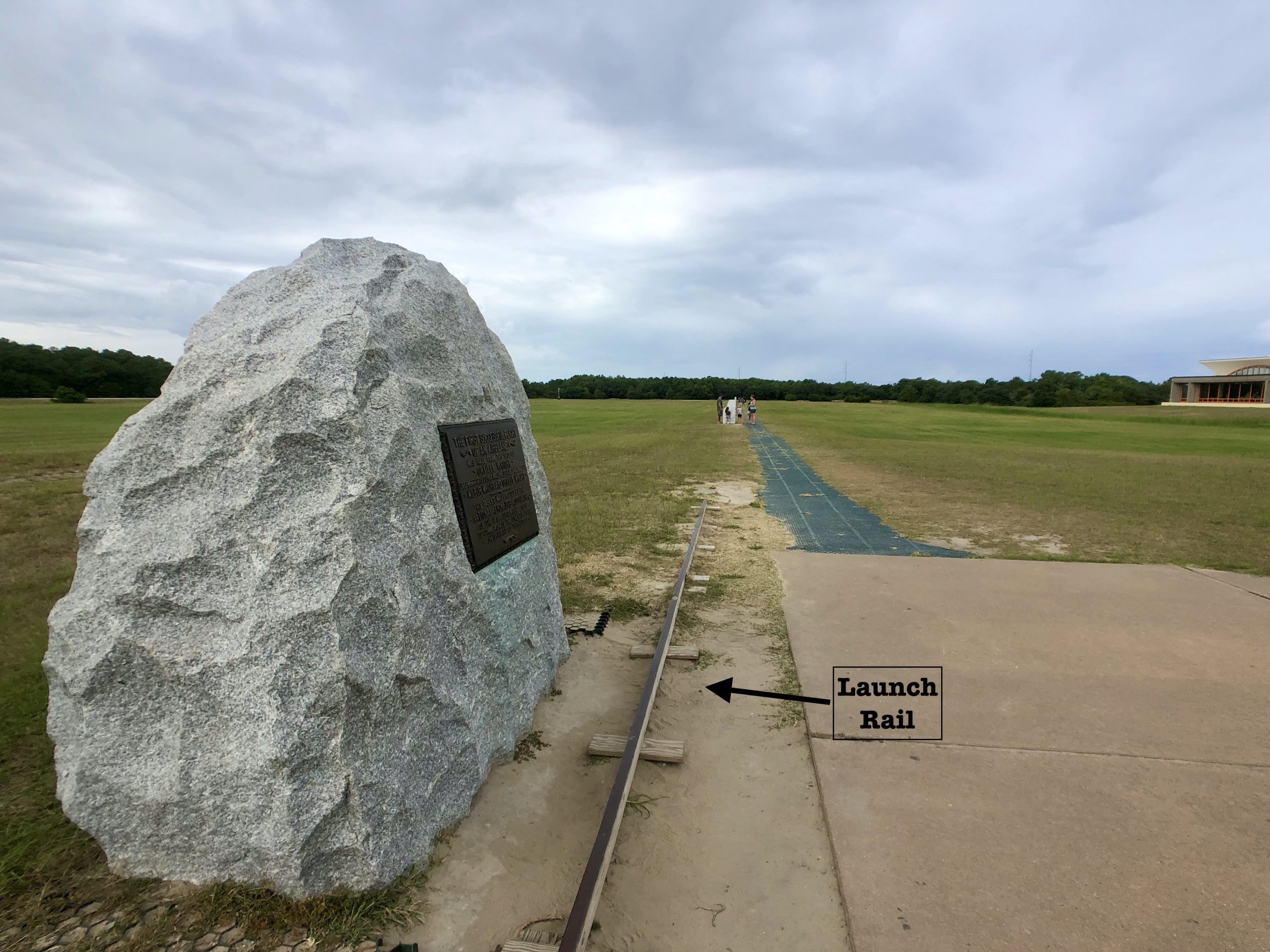
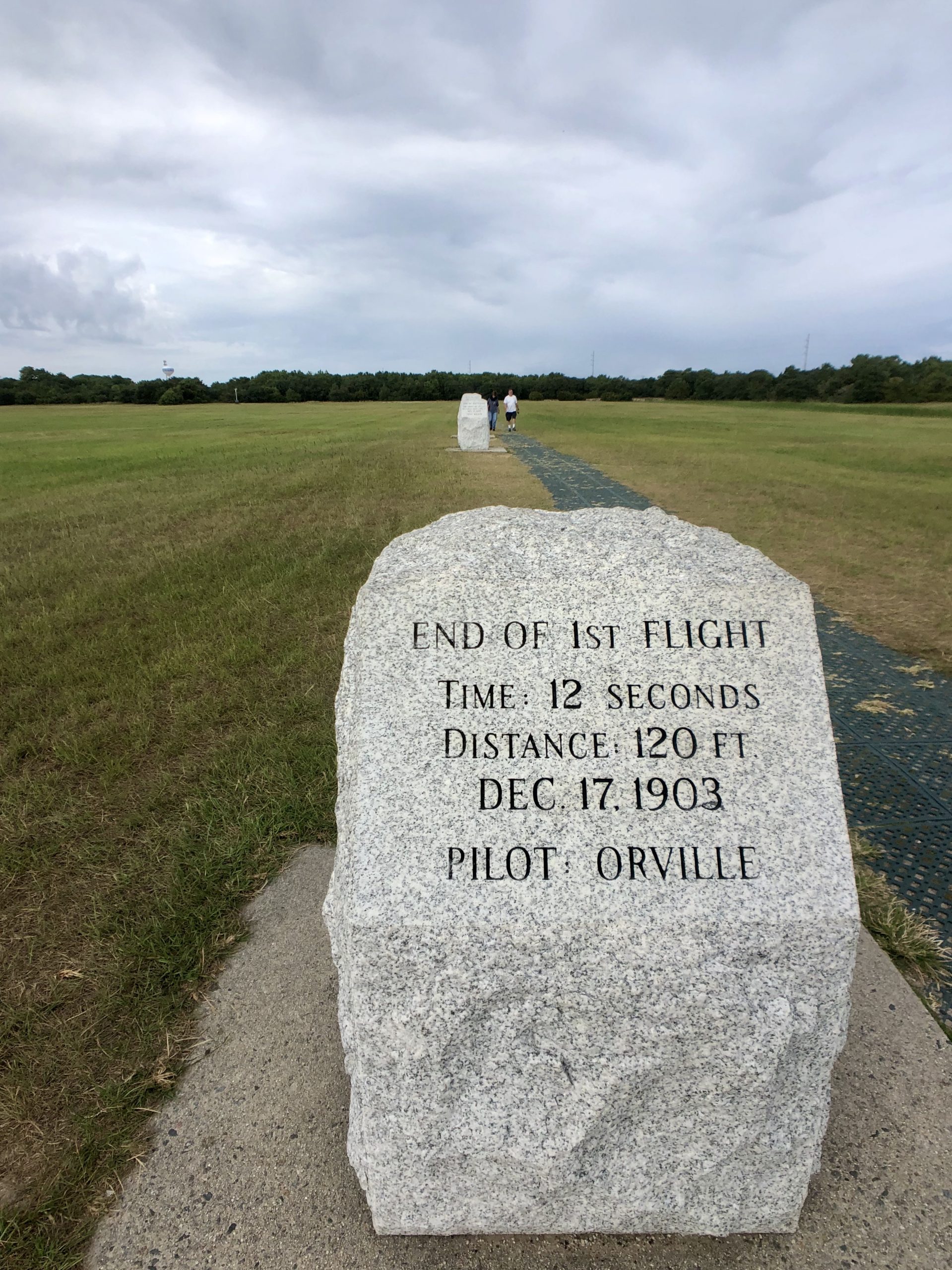
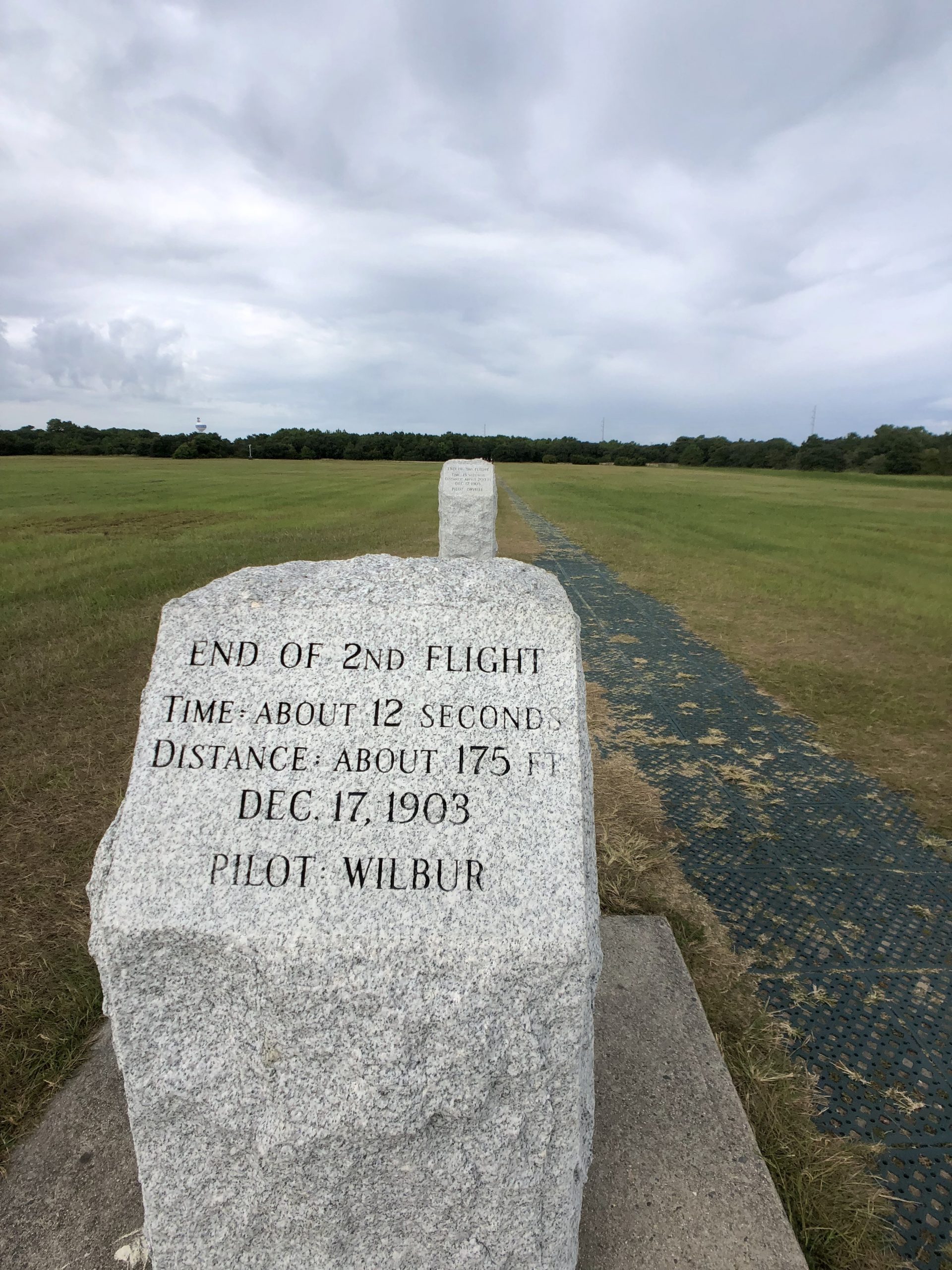
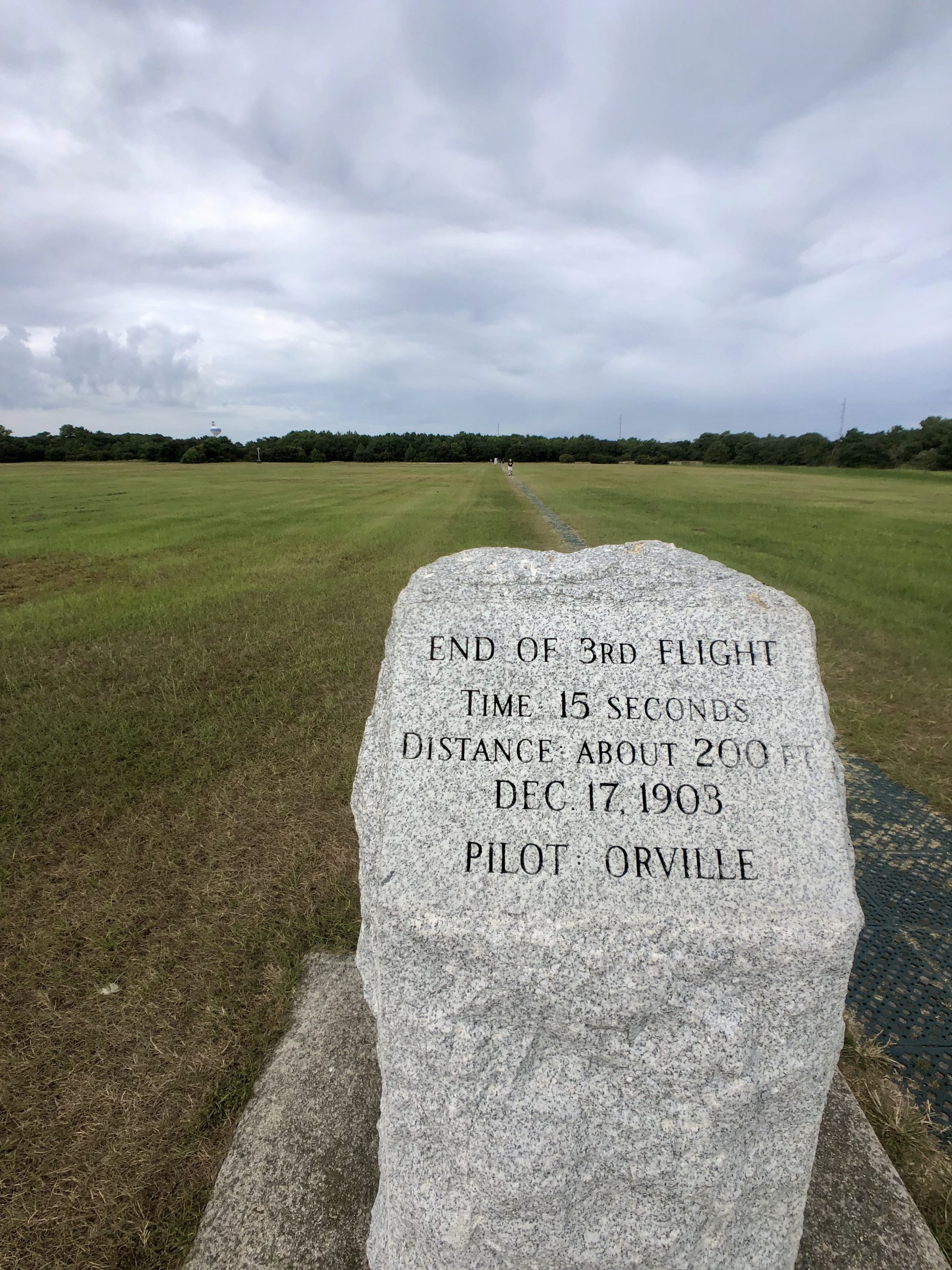
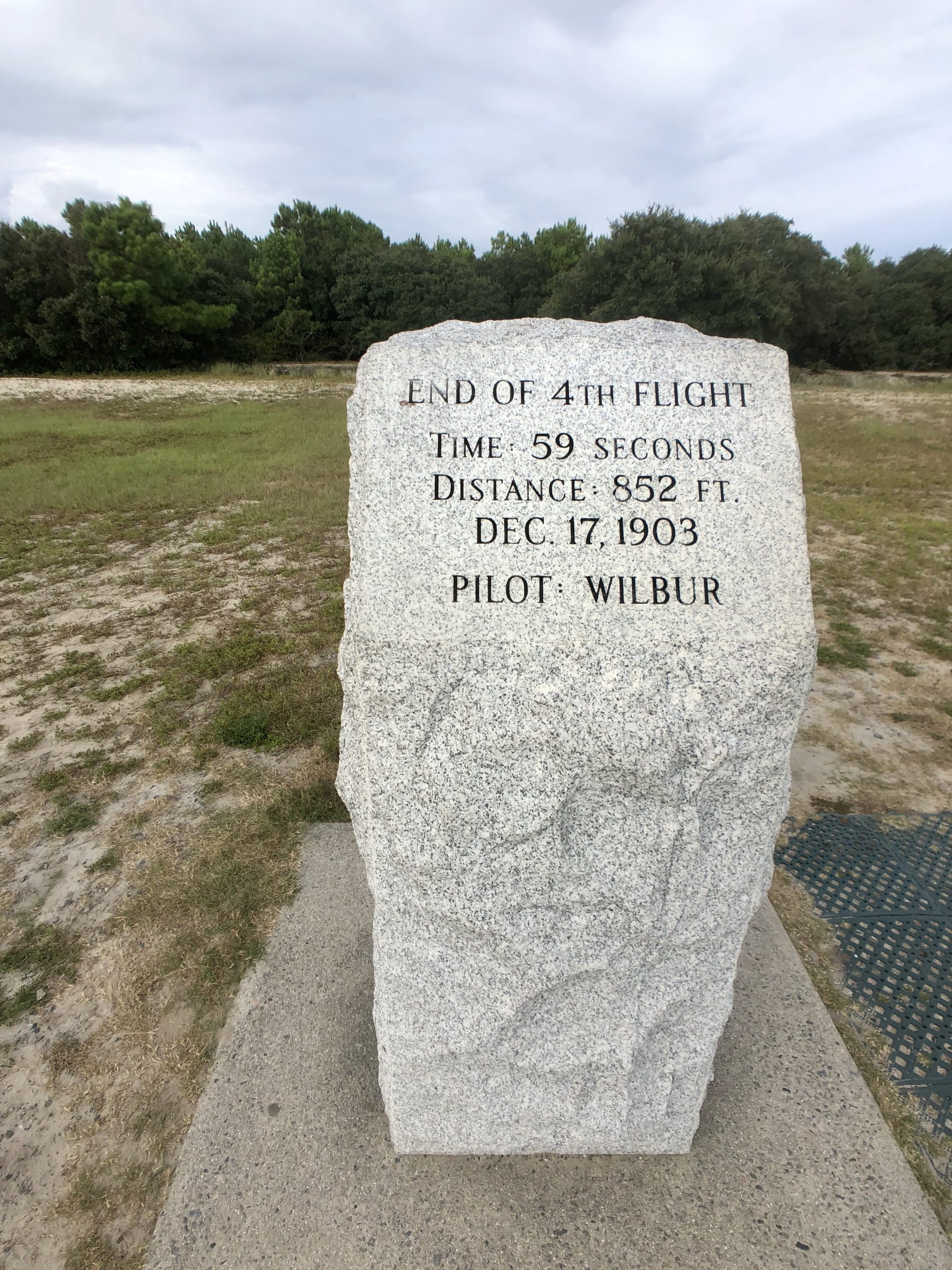
Below is a view from the landing spot of the fourth flight back towards the takeoff spot at the commemorative boulder.
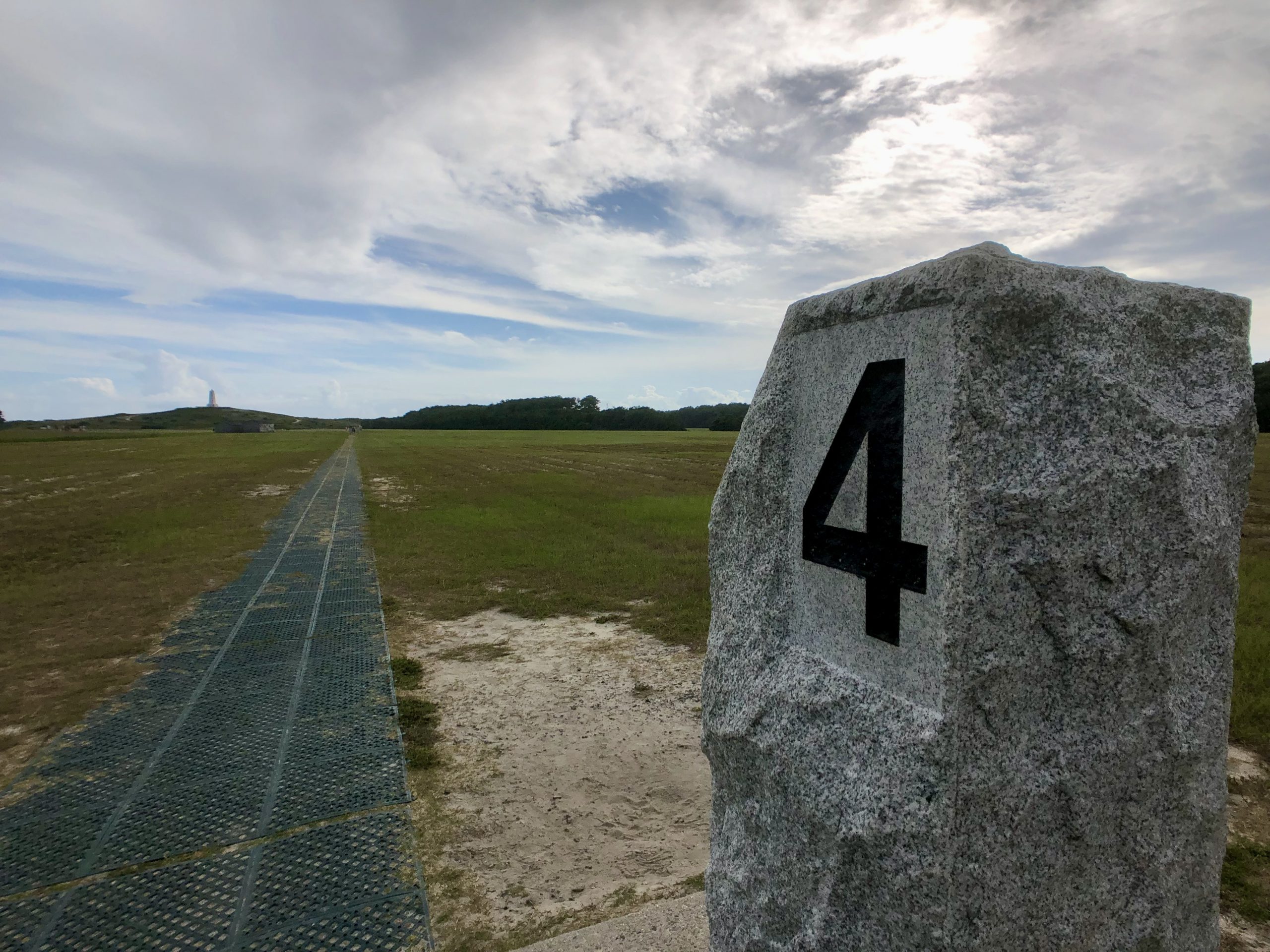
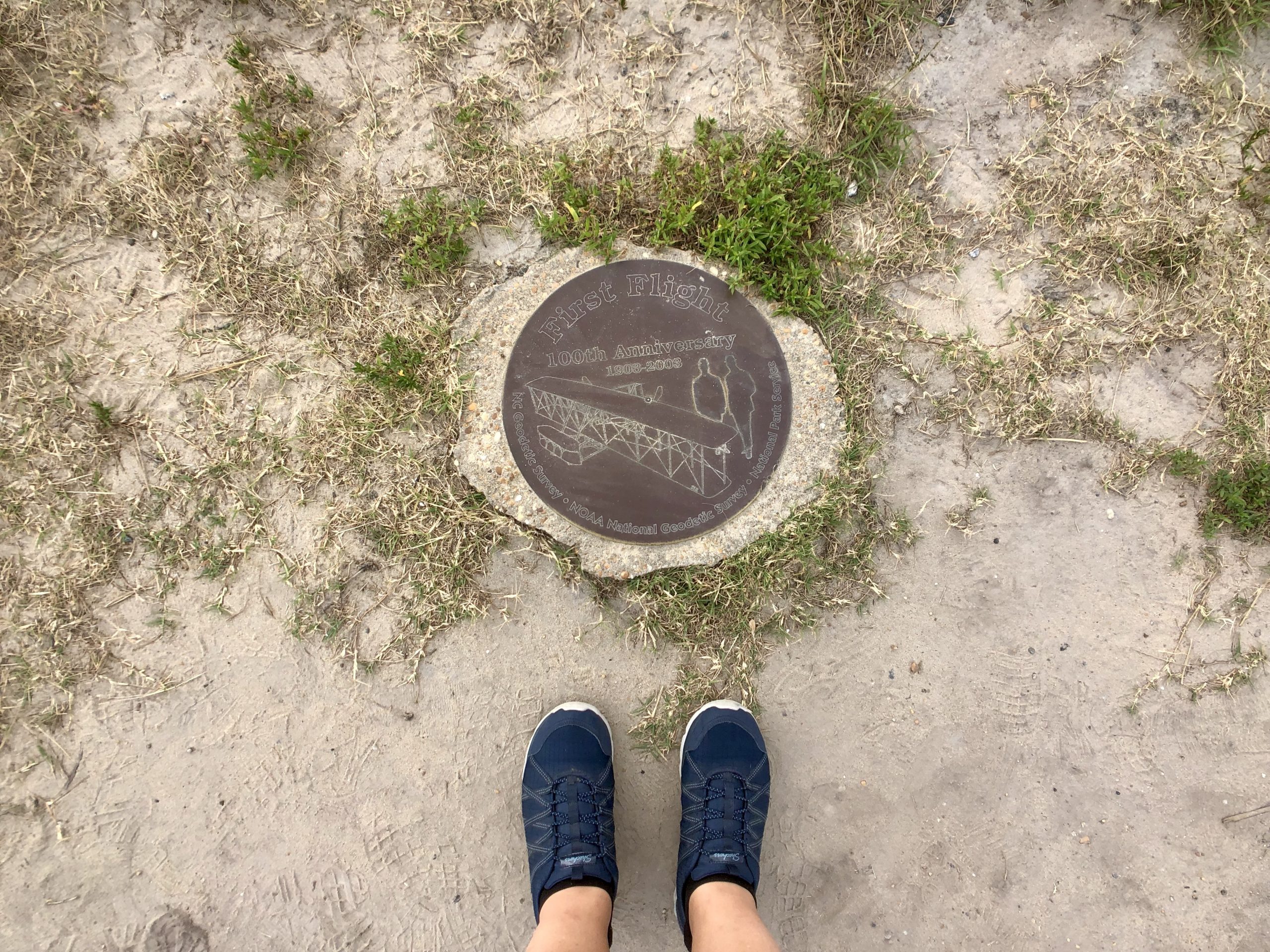
“At the opposite end of the field from the First Powered Flight Site is Kill Devil Hill. It is from this hill that the Wright Brothers launched over 1,000 glider flights. Today it is covered in grass, but back in 1903 it was a traditional sand dune that shifted heights and positions daily due to the strong winds. It is now 90 feet tall and is 450 feet southwest of where it was at the time of the Wright Brothers’ glider experiments.” – National Park Planner
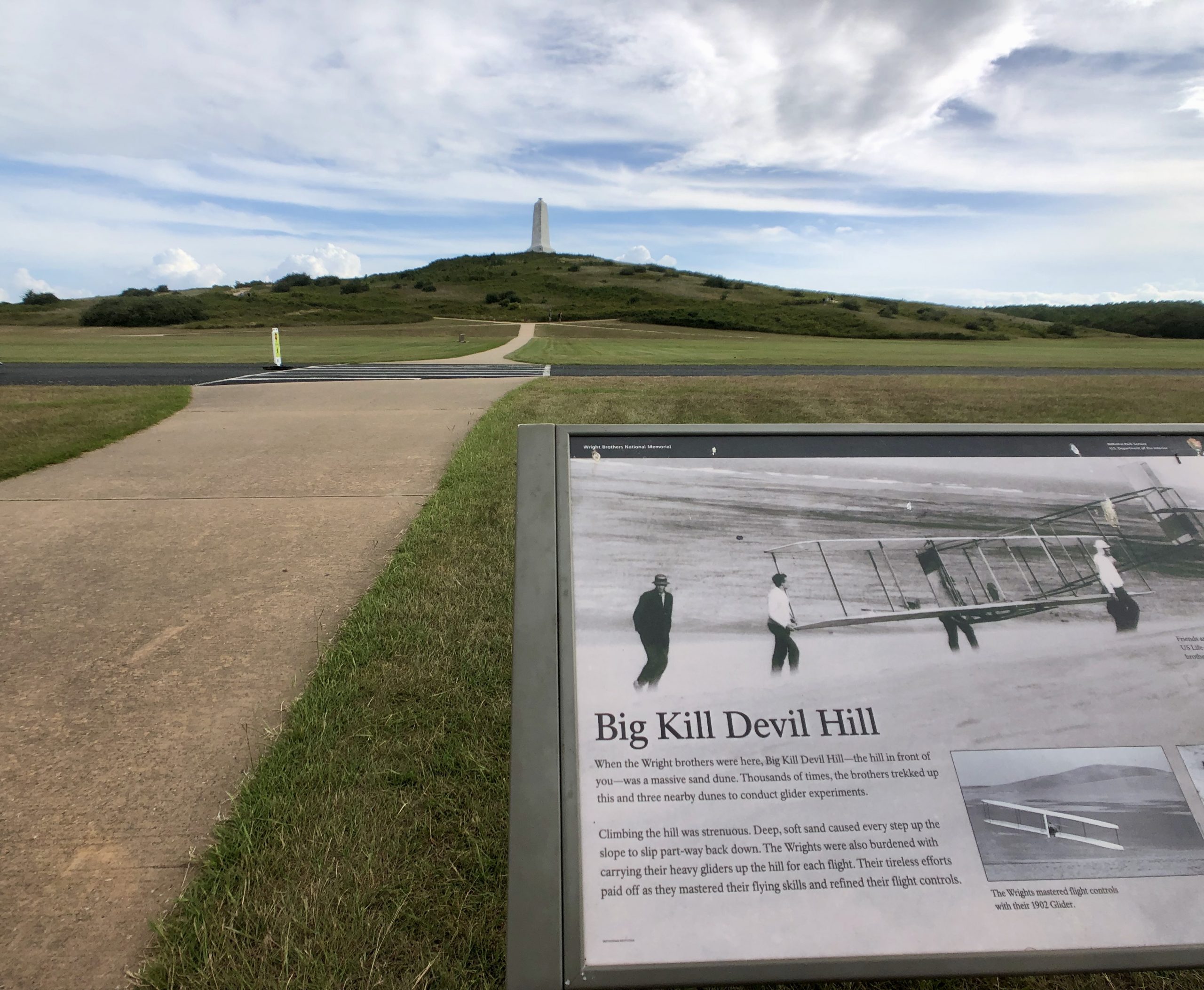
“Climbing the hill was strenuous. Deep, soft sand caused every step up the slope to slip part-way back down. The Wrights were also burdened with carrying their heavy gliders up the hill for each flight.”
NPS
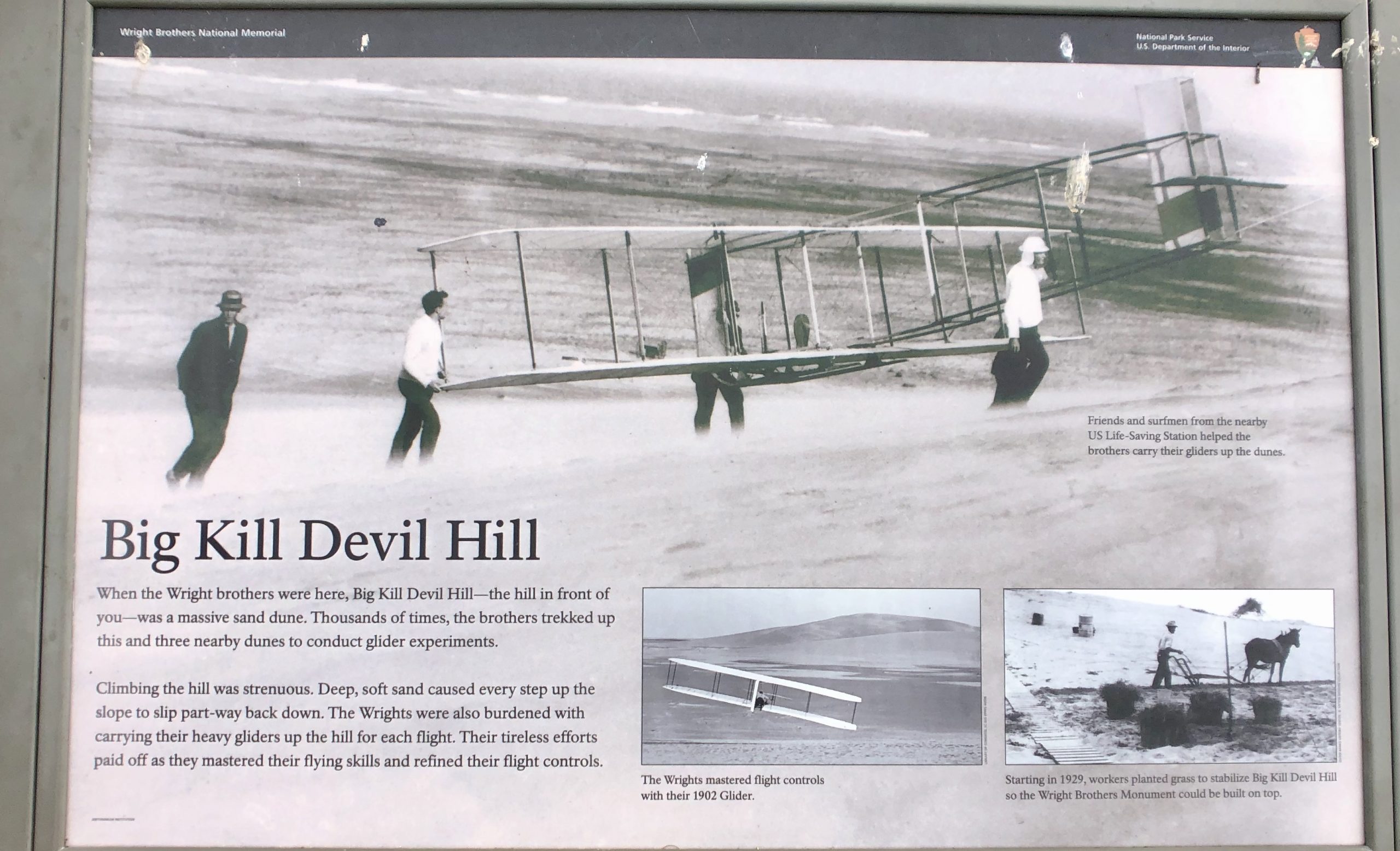
“The whole community got involved with the stabilization process. Children were even paid a penny for each bucket of dirt they brought to the hill. Once the hill was the right soil consistancy, they planted grass, anchoring it to the spot. Today, this hill is officially known as the “Kill Devil Hill,” named after the town that surrounds it.” – Atlantic Reality of the Outer Banks
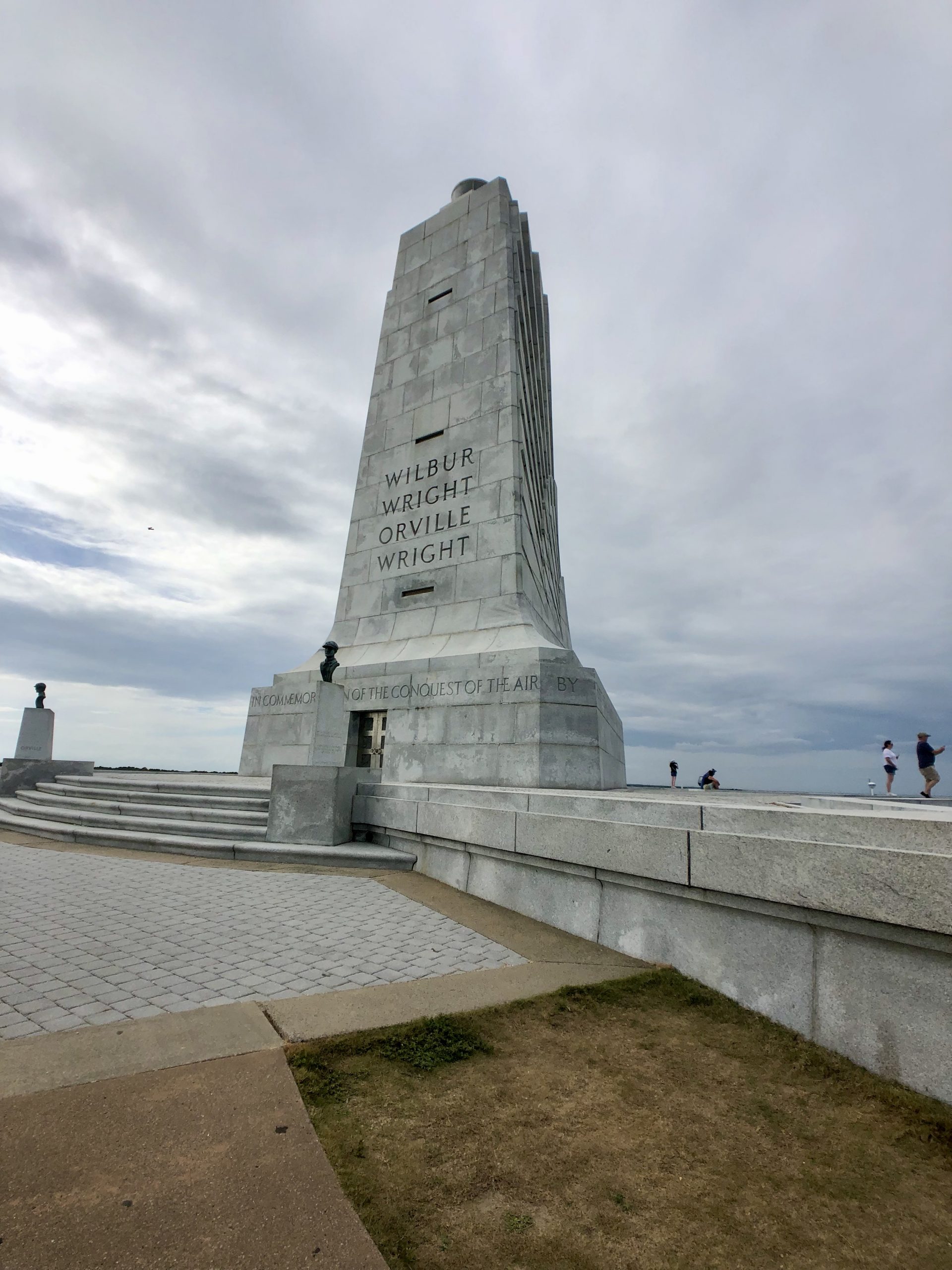
“Though it looks solid, it’s actually hollow with a black granite floor. When it was originally built, it was intended to be open to the public as an extension of the museum. Two alcoves inside originally held the busts of the brothers that now appear outside. Narrow stairs lead upward, letting you see the entire park from the top of the monument. With the combined height of both the hill and the structure itself, it’s the single highest point on the Outer Banks.” – Atlantic Reality of the Outer Banks
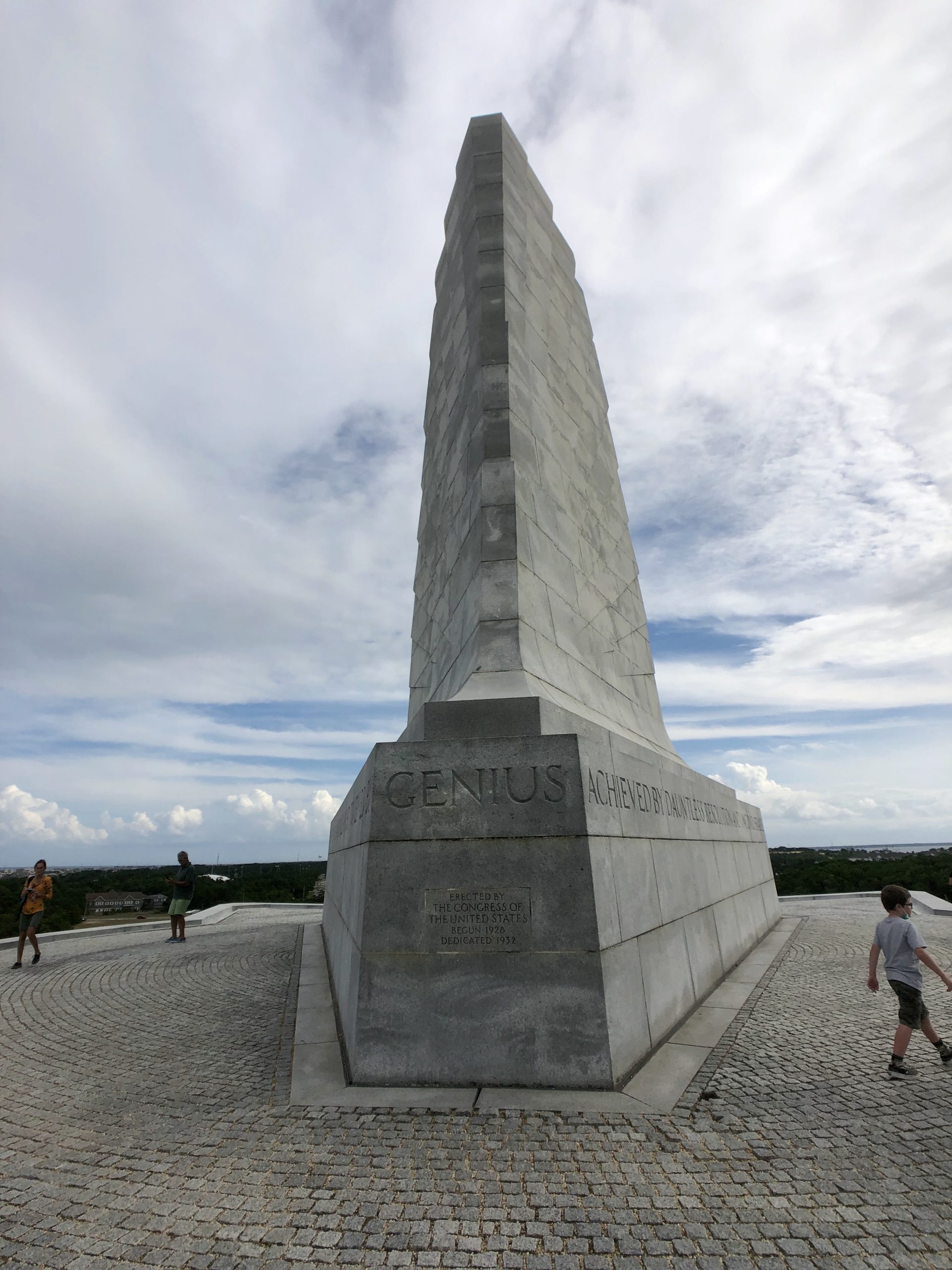
The views from the top of Kill Devil Hill are spectacular. These pictures really doesn’t do it justice.
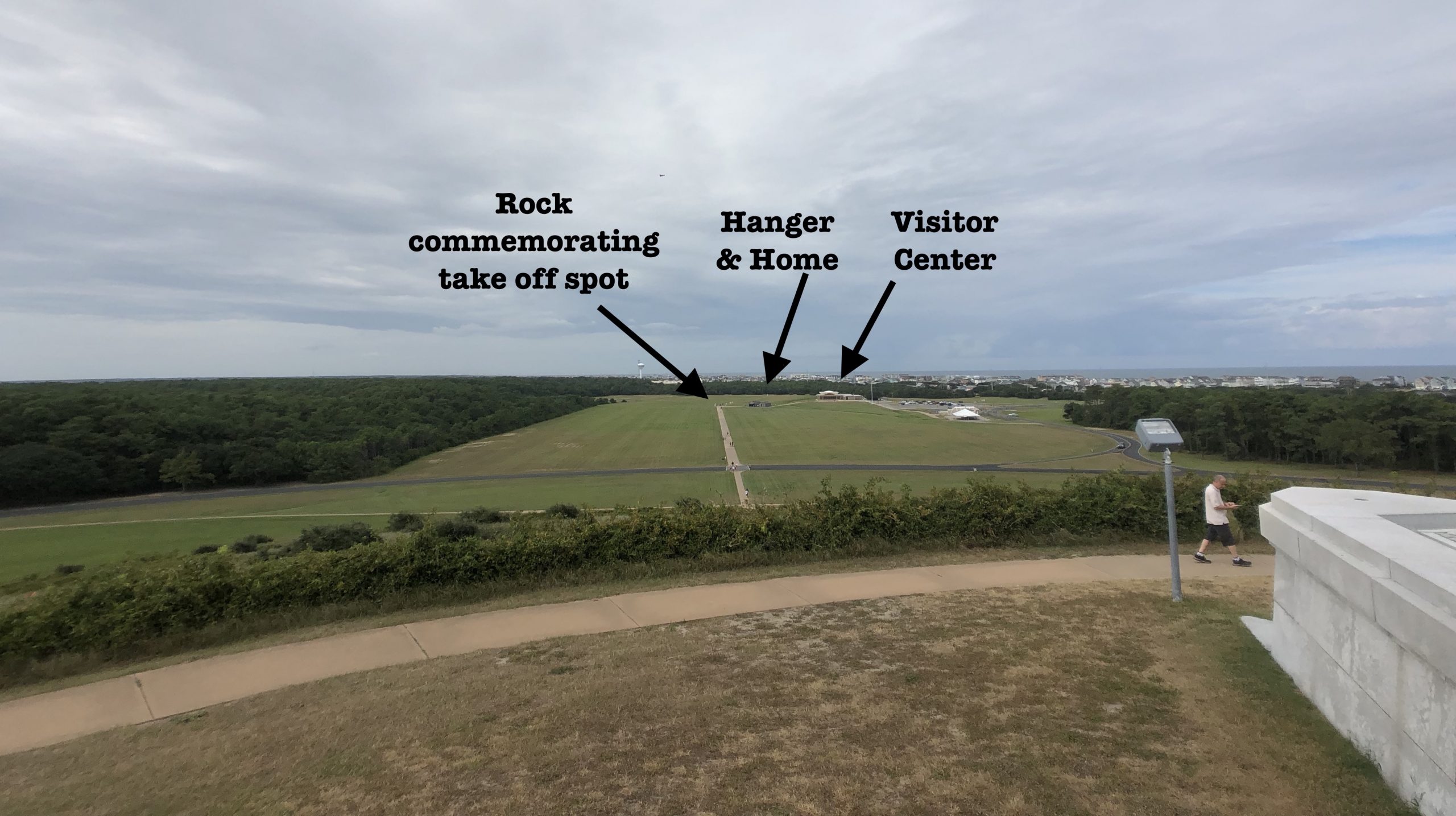
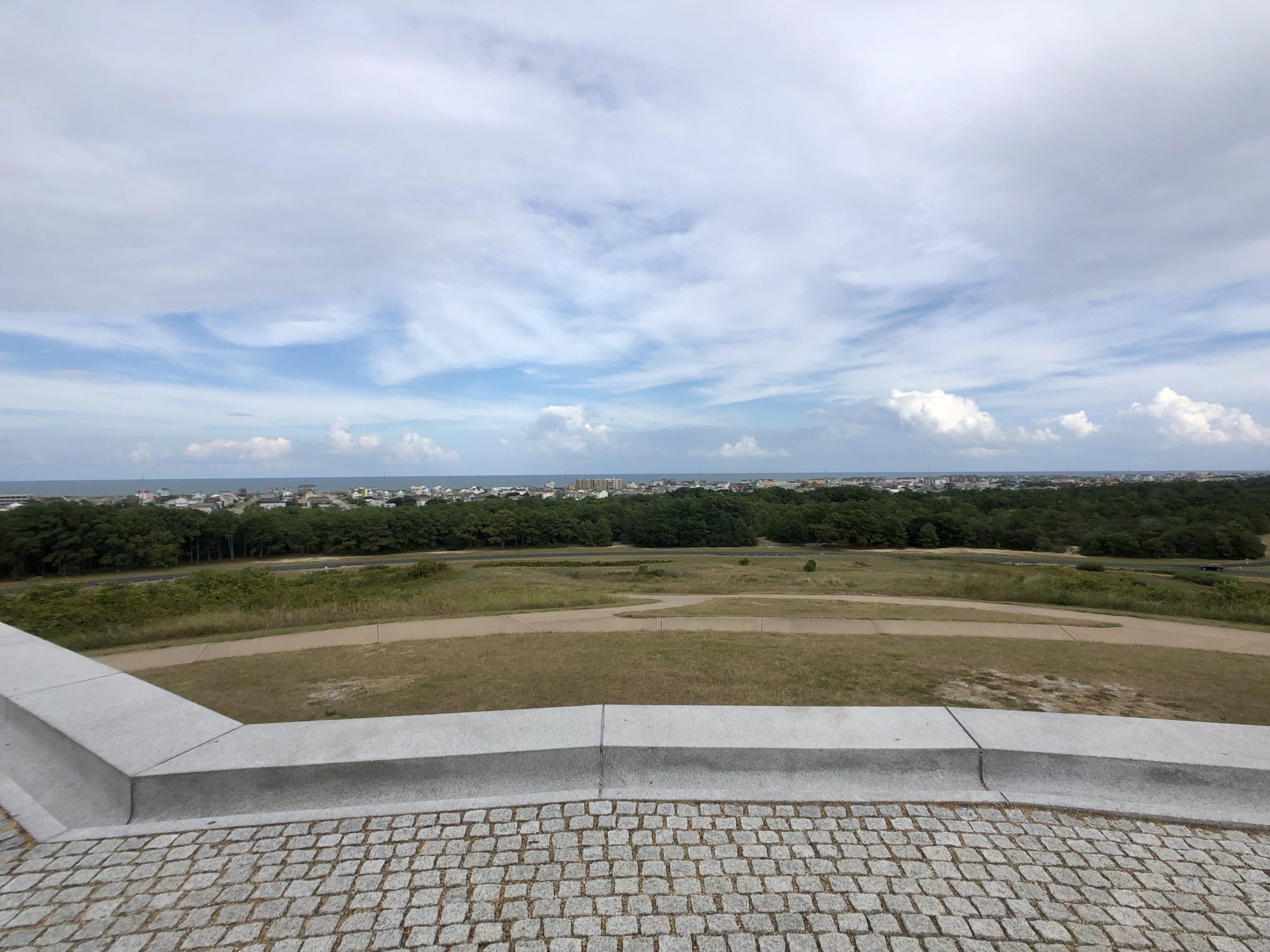
“The brothers made four flights in the Wright Flyer on December 17, 1903, and as Orville and Wilbur stood discussing the final flight, a sudden strong gust of wind caught hold of the aircraft and flipped it several times. The aircraft sustained such heavy damage to its ribs, motor and chain guides that it was beyond repair. The Wright Flyer was crated back to Dayton and never flew again.” – History.com
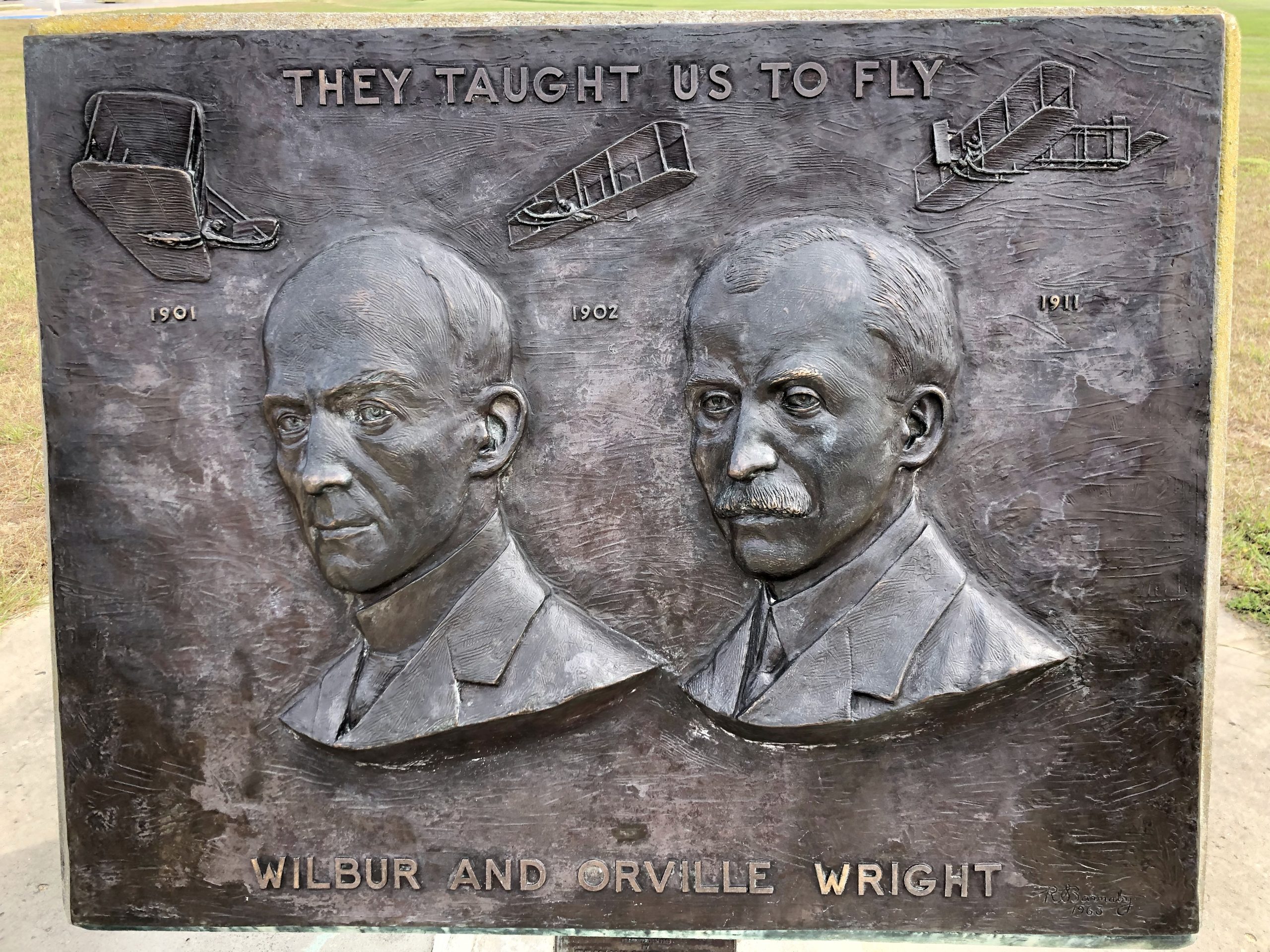
We stayed just a couple of miles away at OBX Campground. It was very peaceful though there wasn’t much shade during the day. We did see four deer come by towards the end of the day.
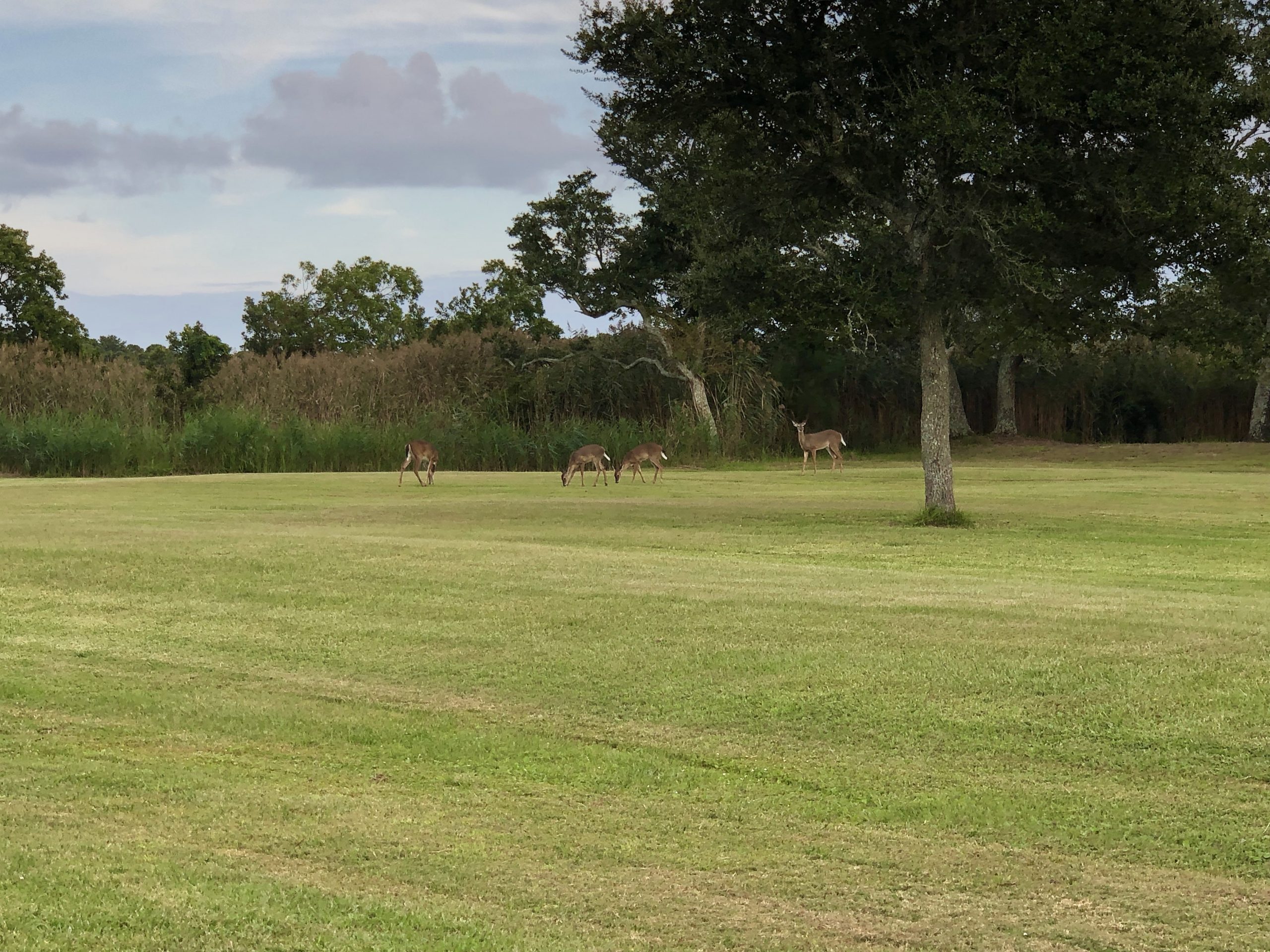
The next morning we drove over to the beach. There was a storm out in the Atlantic and the water was very choppy but it didn’t stop us from kicking off our shoes and dipping our toes in the water.
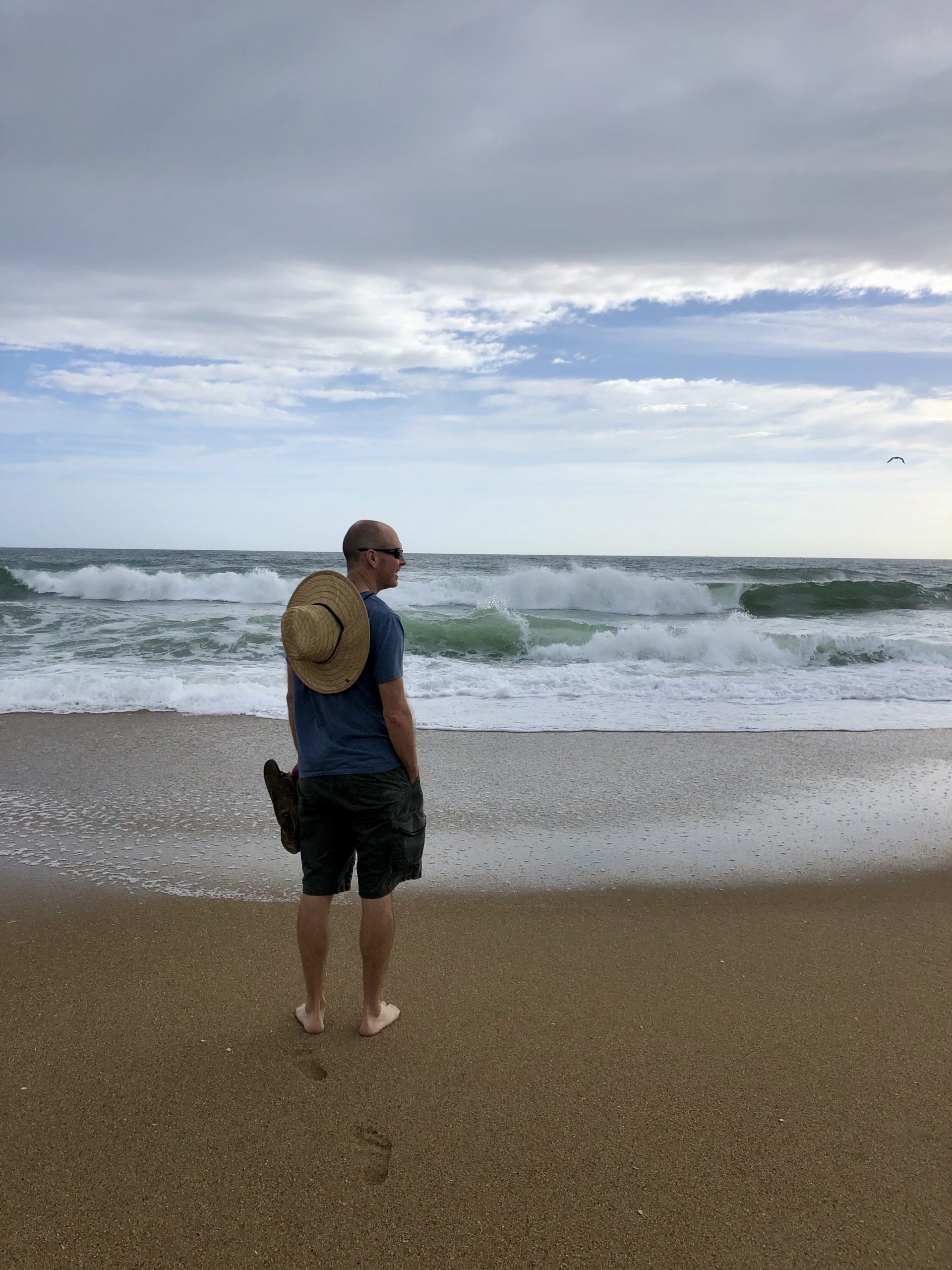
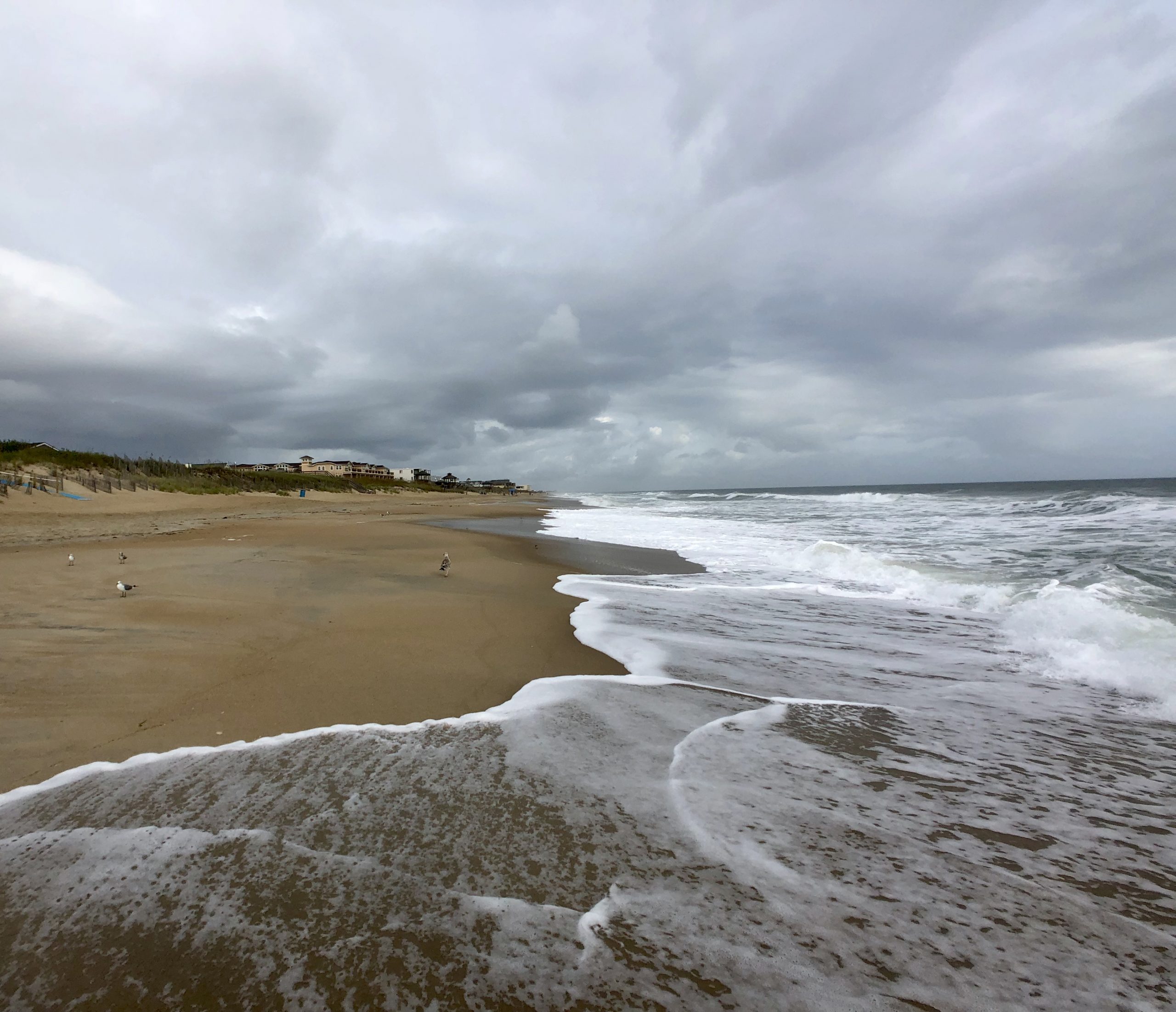
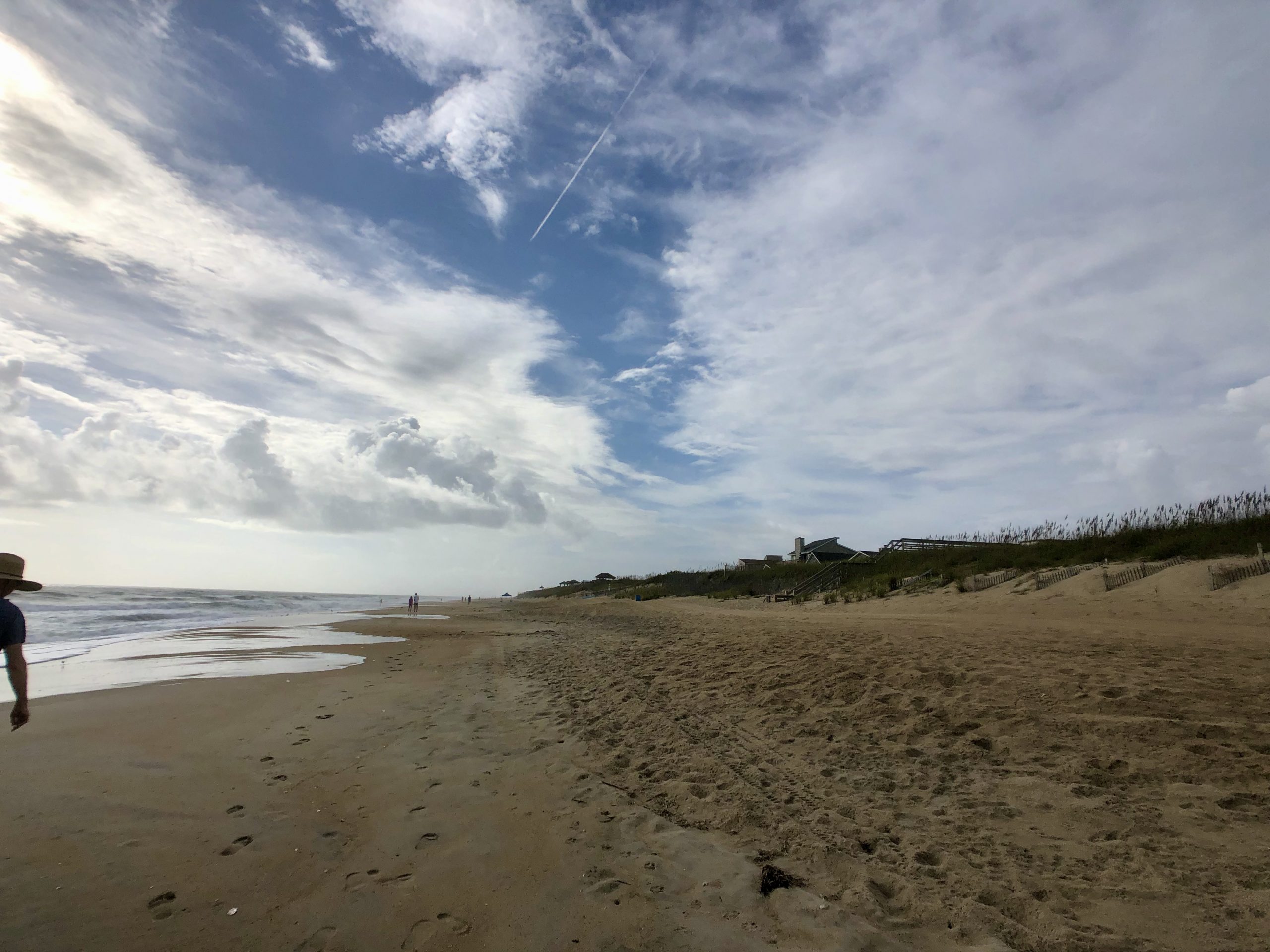
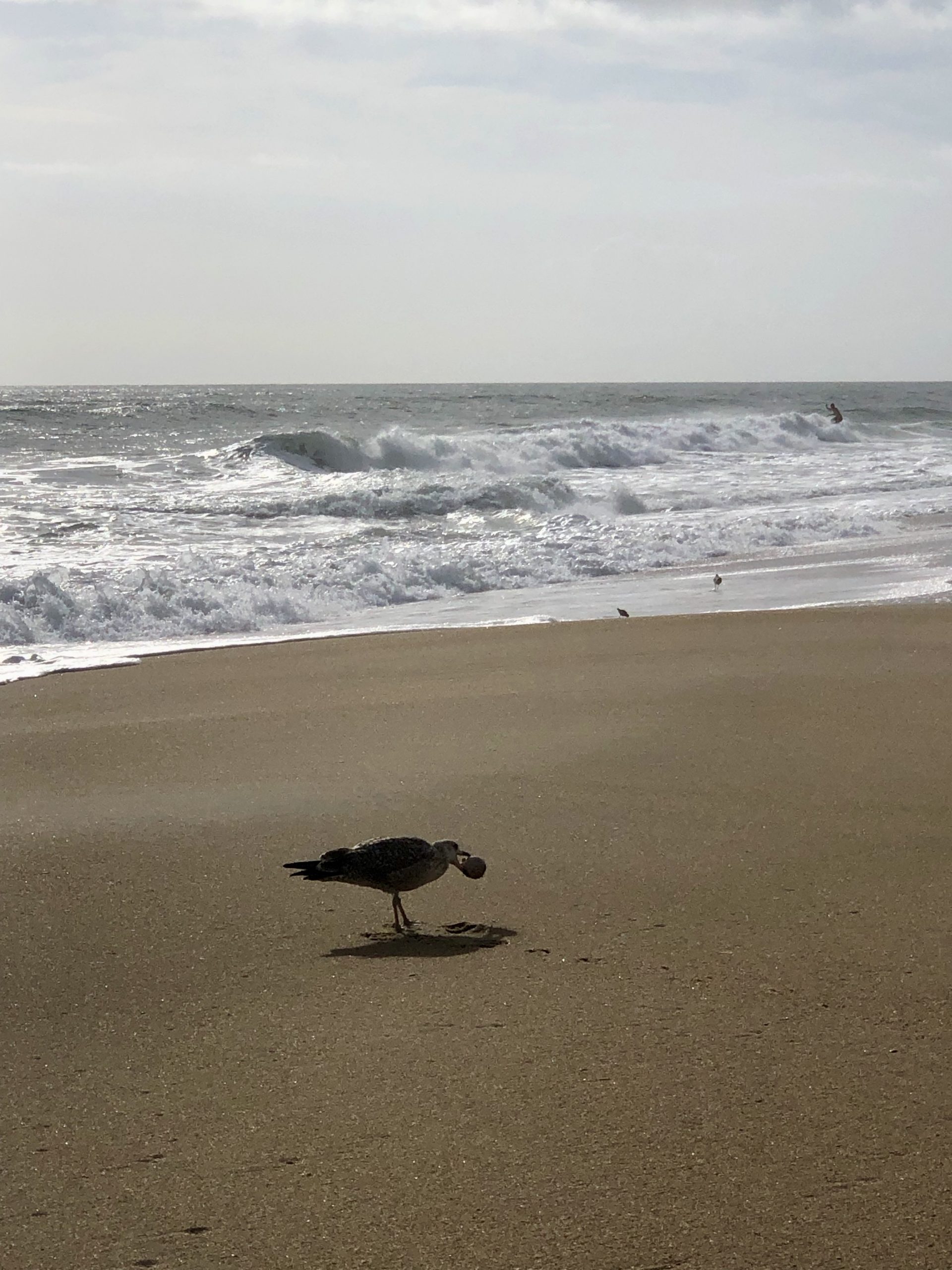
Heading out we continued south past Nags Head and were surprised to see the gas sign behind their welcome sign.
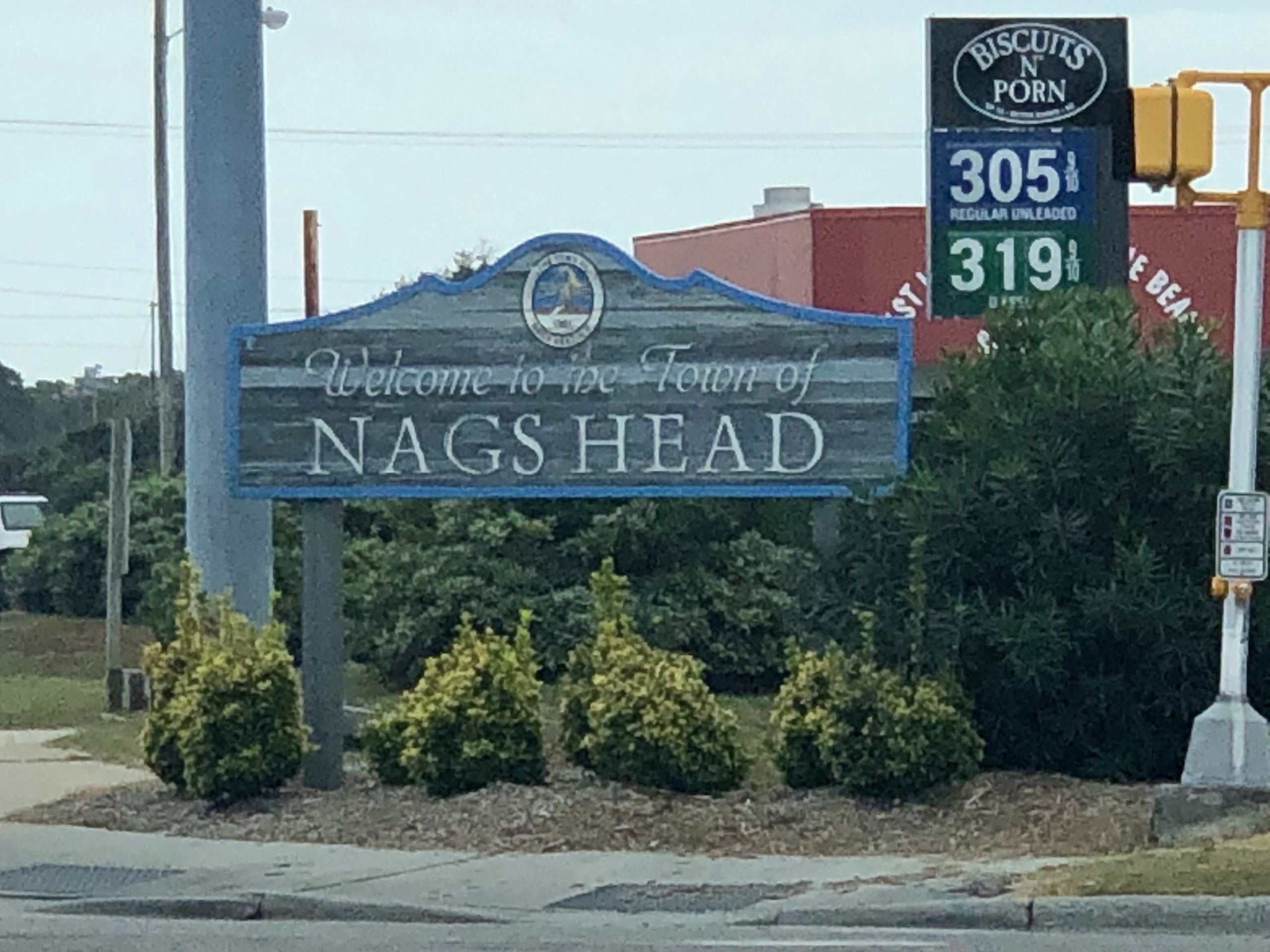
“The people at Biscuits N’ Porn cheerfully admit that the whole idea is just a brilliant money grab. Stop Quik, which opened in 1978, was known locally for years as Miss Helen’s, named for the owner’s mother and the original biscuit maker. In the early 2000s, a group of surfers dubbed it “Biscuits and Porn” because, like most convenience stores, there was a rack of adult magazines not far from the deli.” – The Takeout
Once we crossed back to the ‘mainland’ from the Outer Banks we saw this row of condos that seemed to each have a spot to park their yacht. Not too shabby.
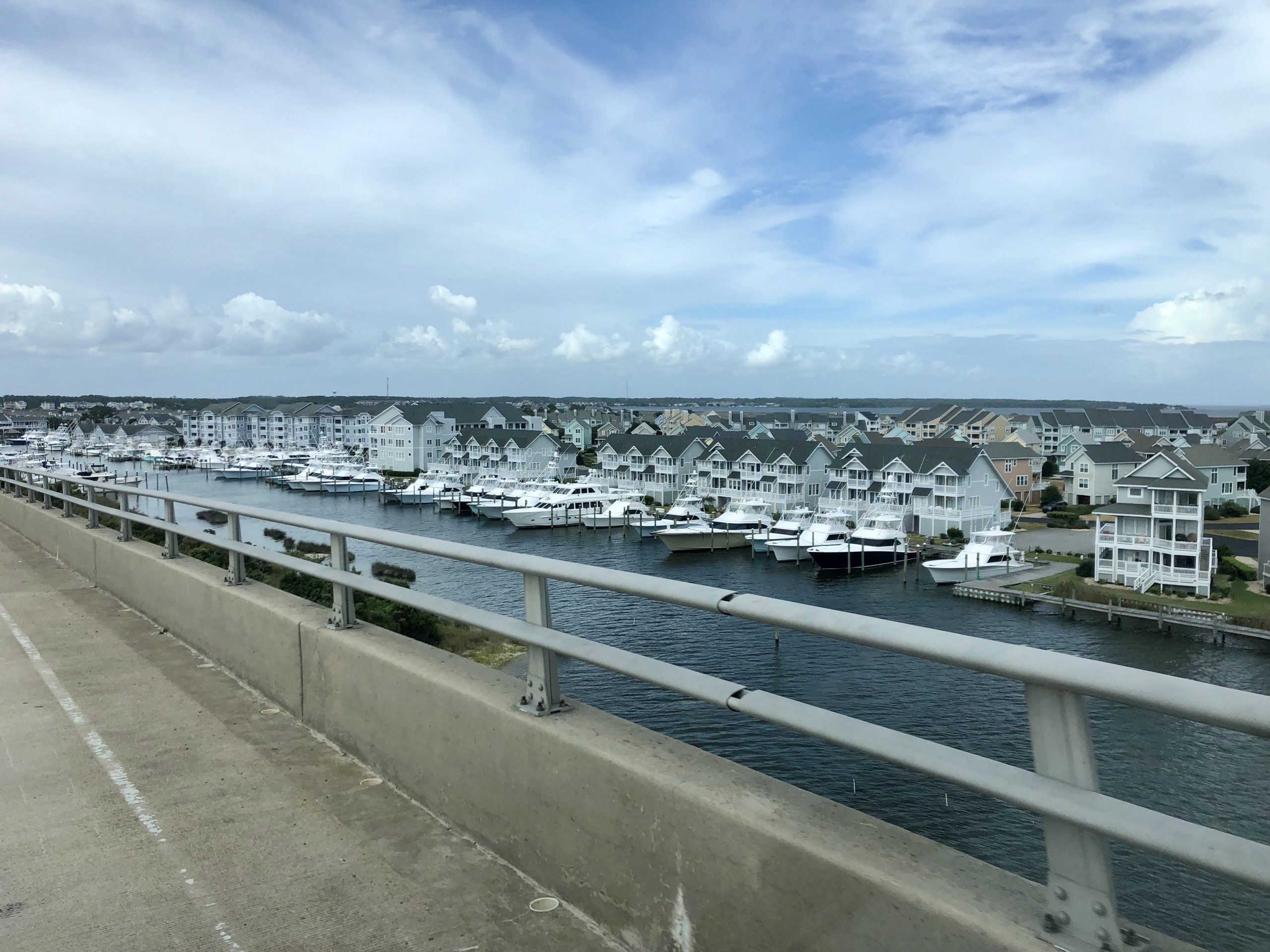
After that we drove for miles and miles along alligator alley. Never did see one though.
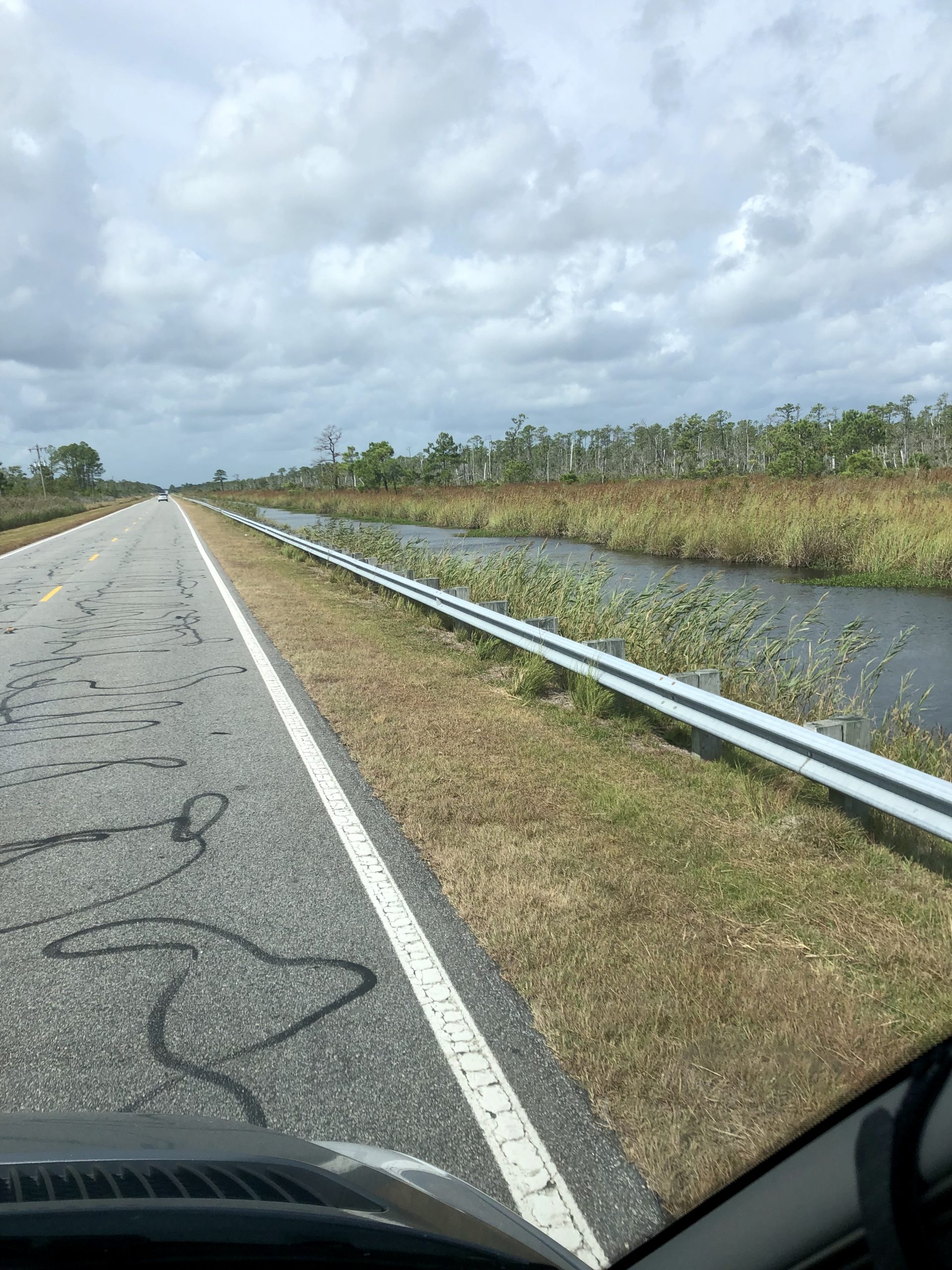
One last interesting bit of trivia from History.com –
“Neil Armstrong carried a piece of the Wright Flyer with him to the moon.
When another aeronautical pioneer from Ohio, Neil Armstrong, became the first man to step foot on the moon in 1969, inside his spacesuit pocket was a piece of muslin fabric from the left wing of the original 1903 Wright Flyer along with a piece of wood from the airplane’s left propeller.”

